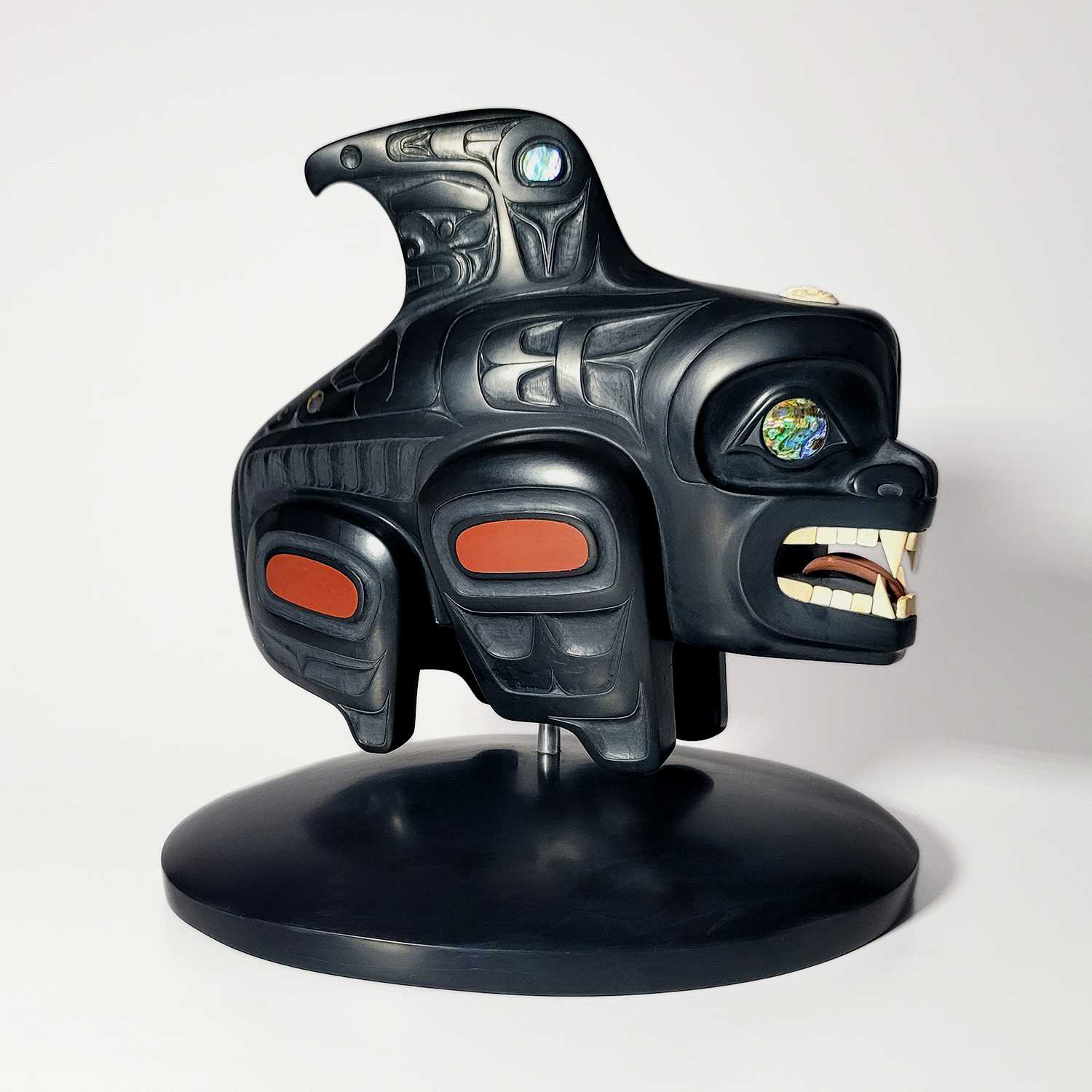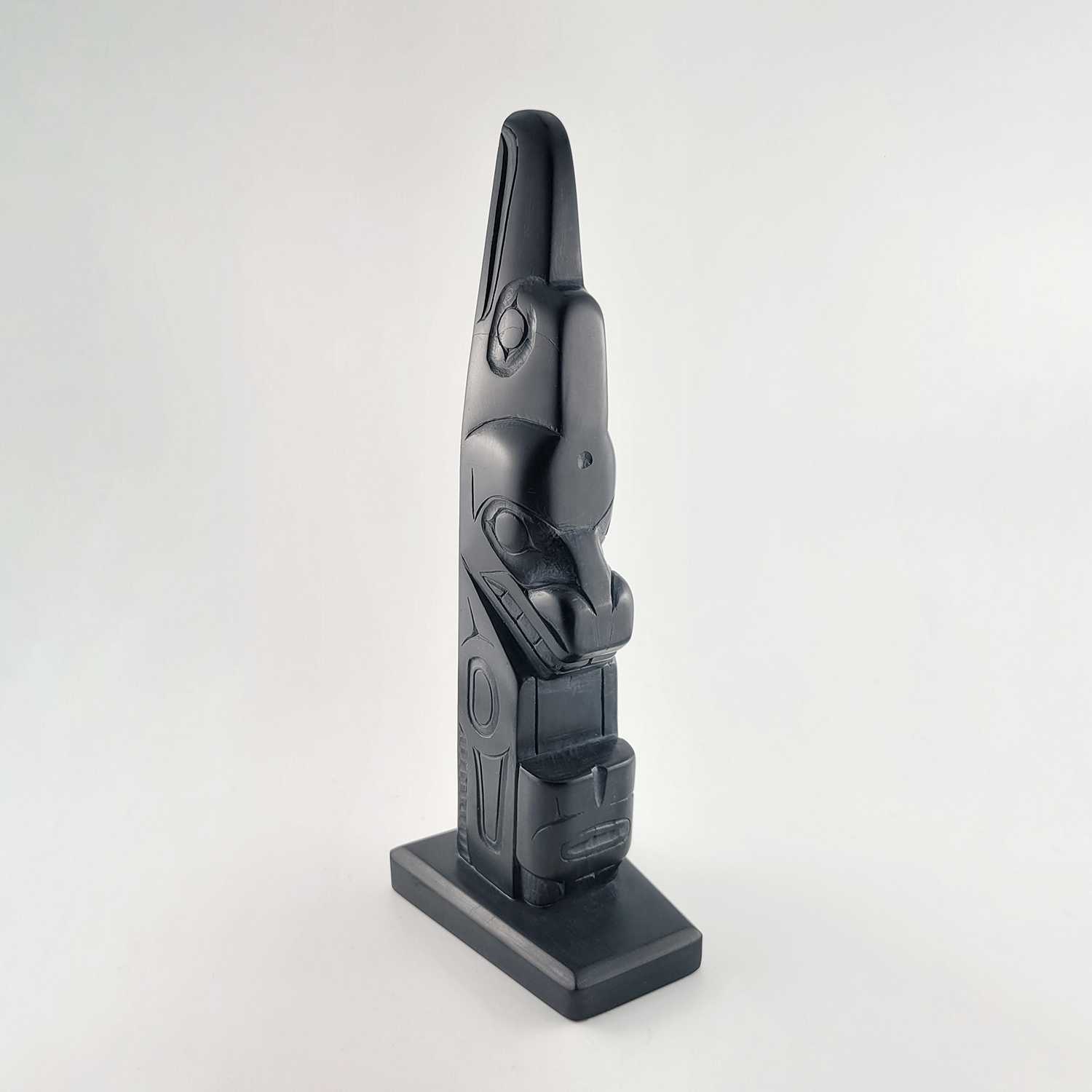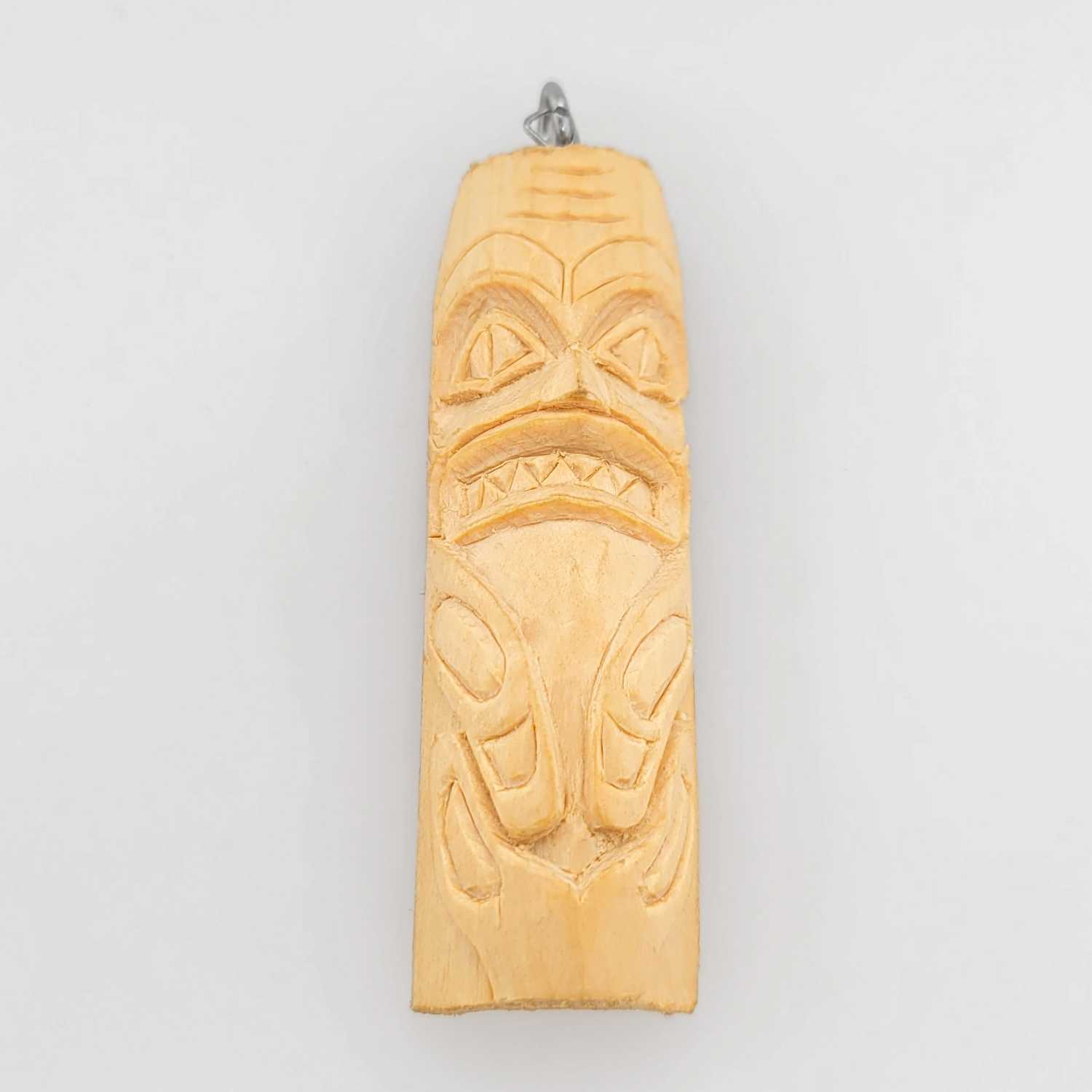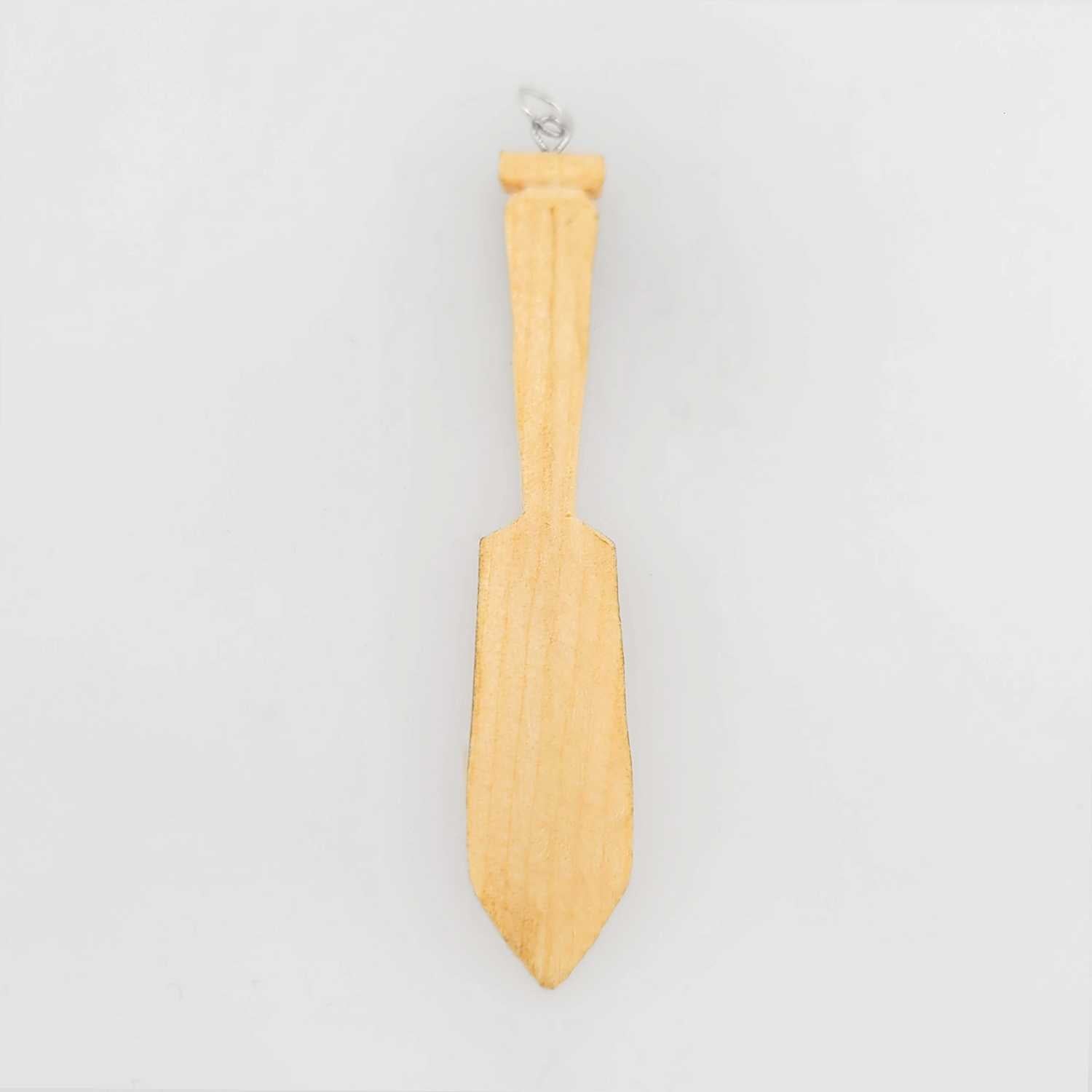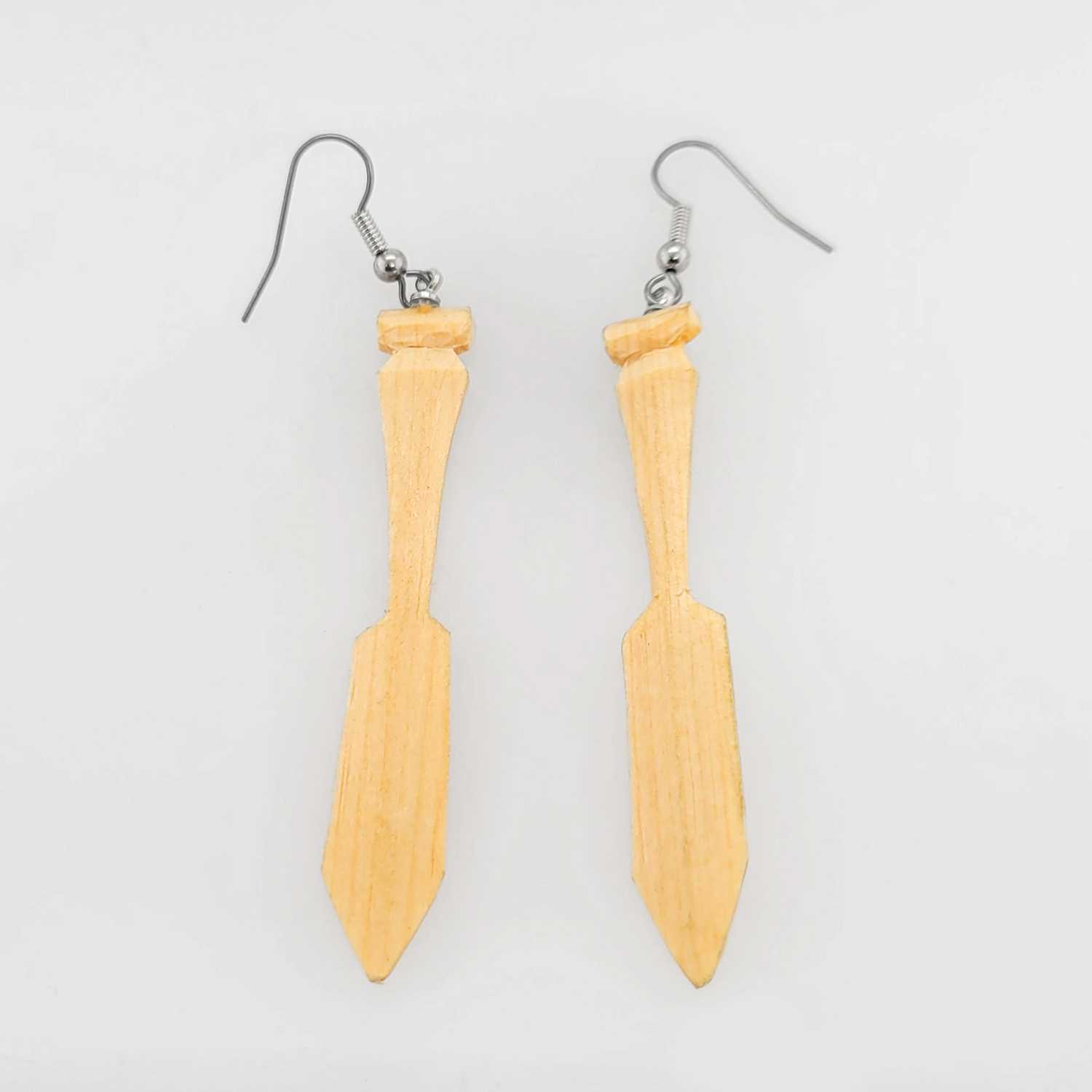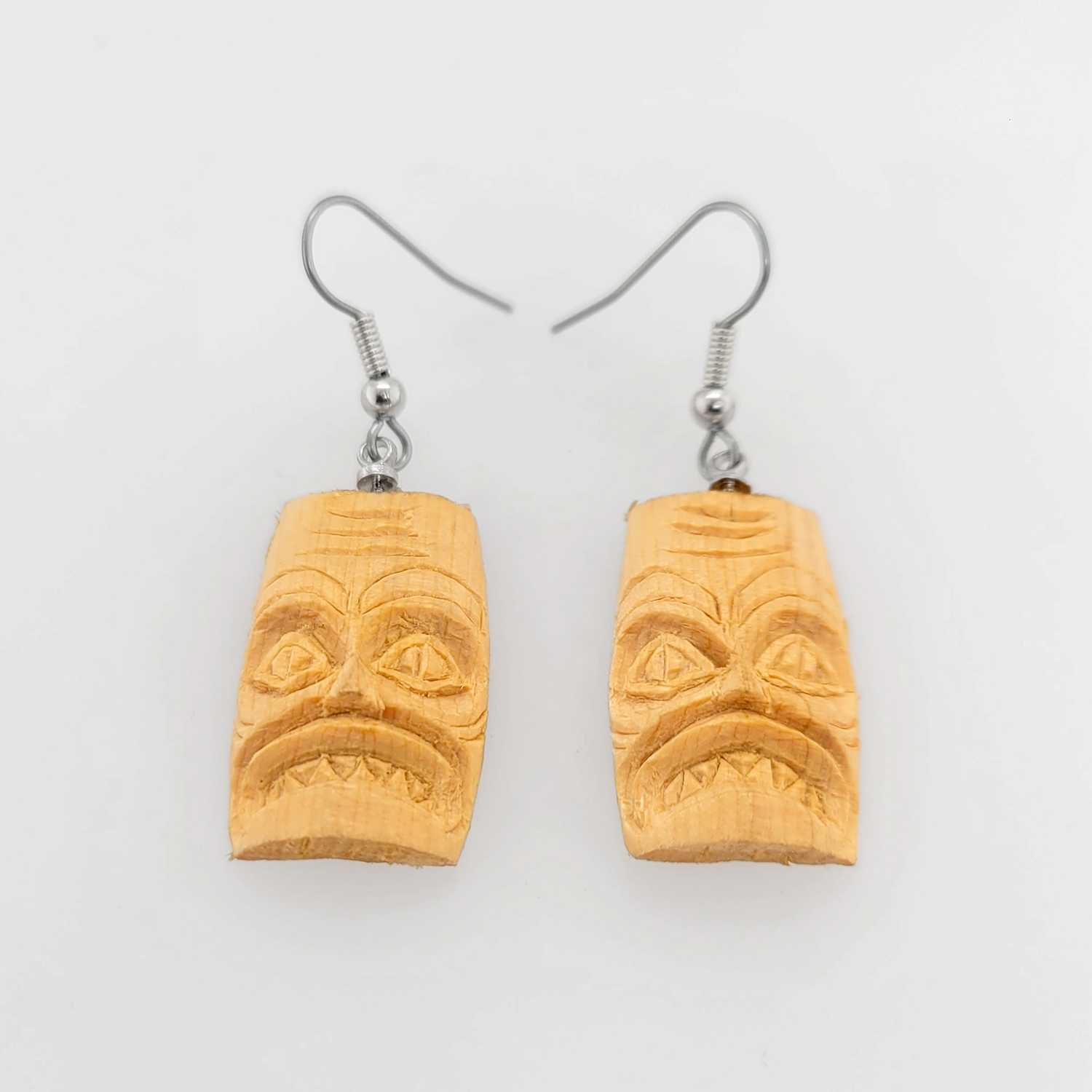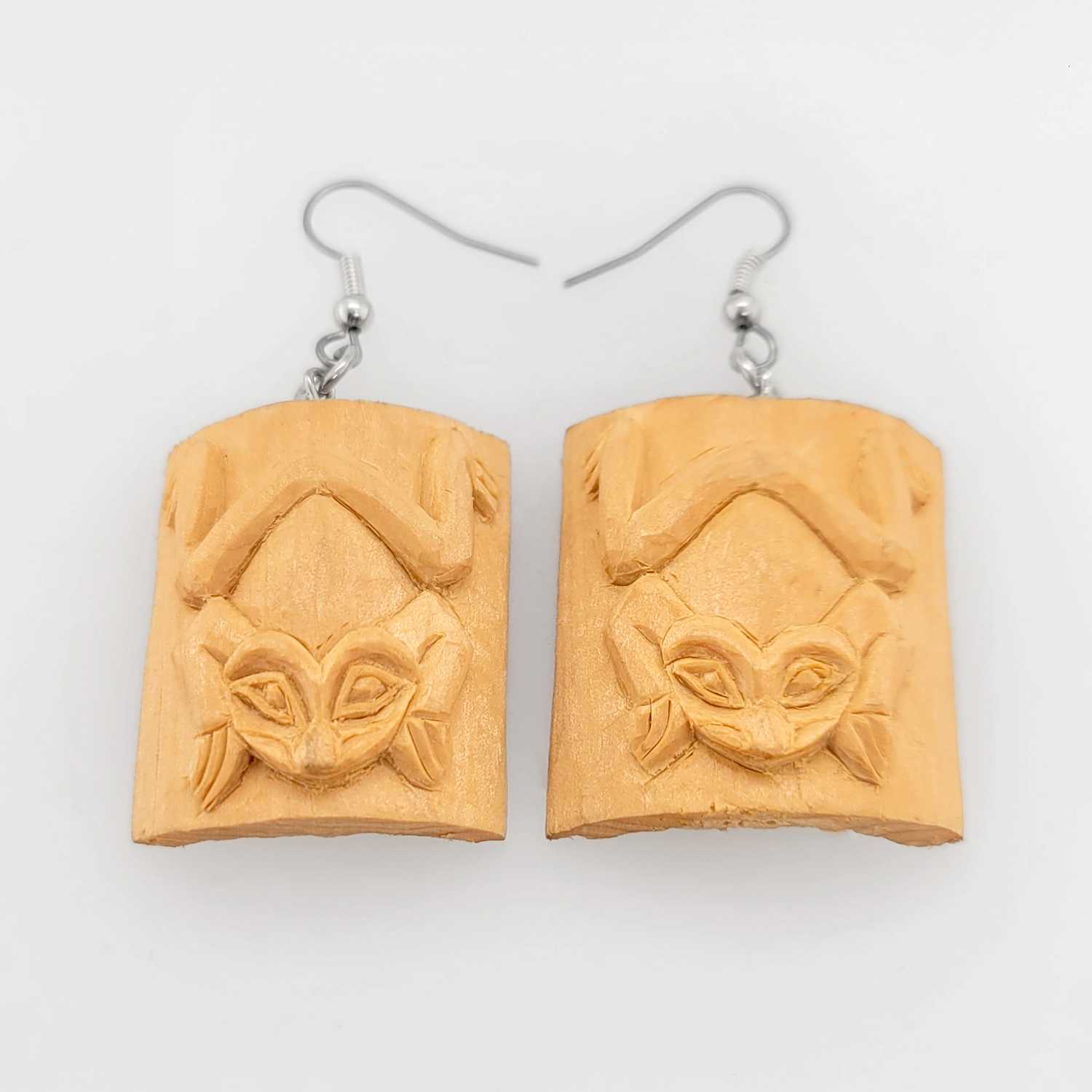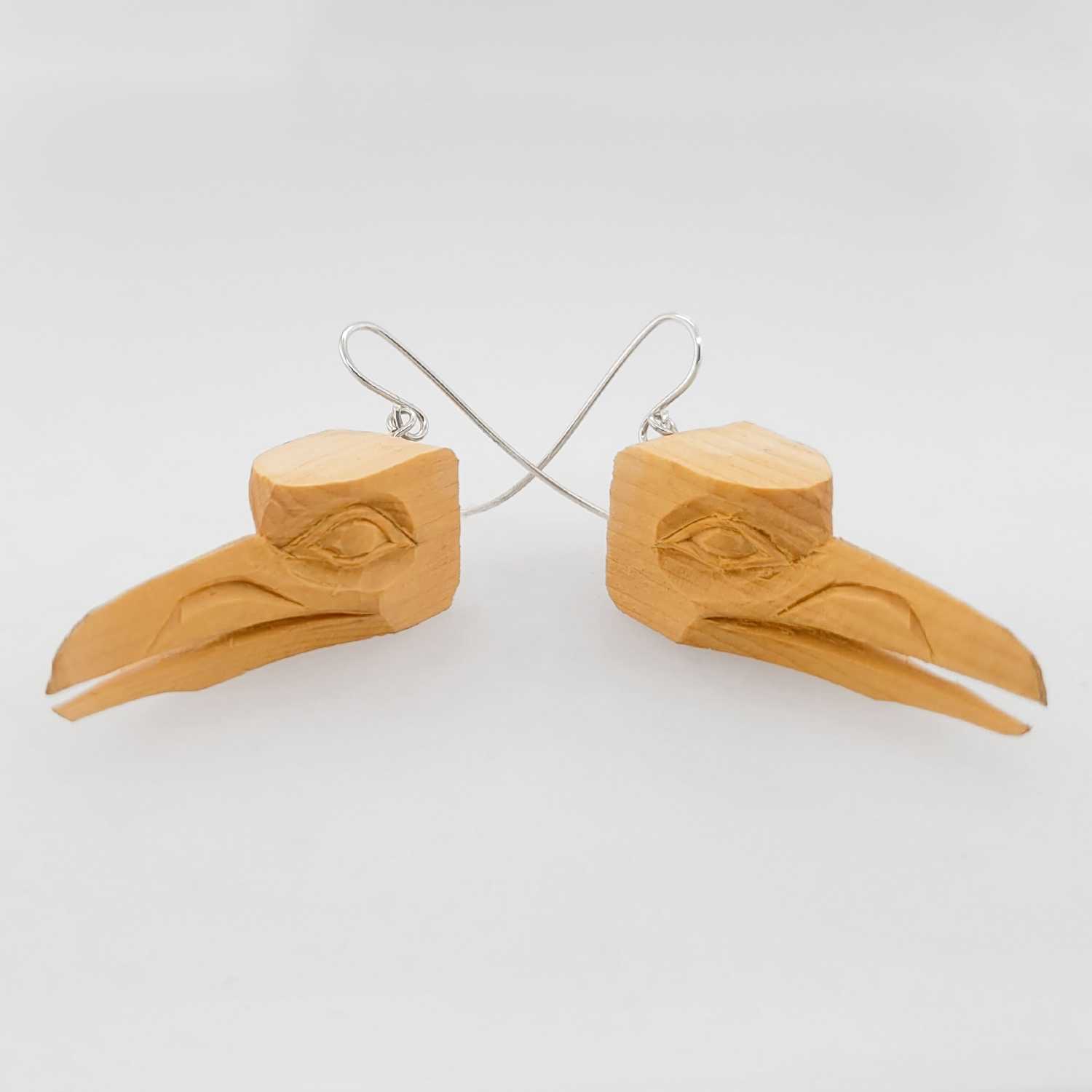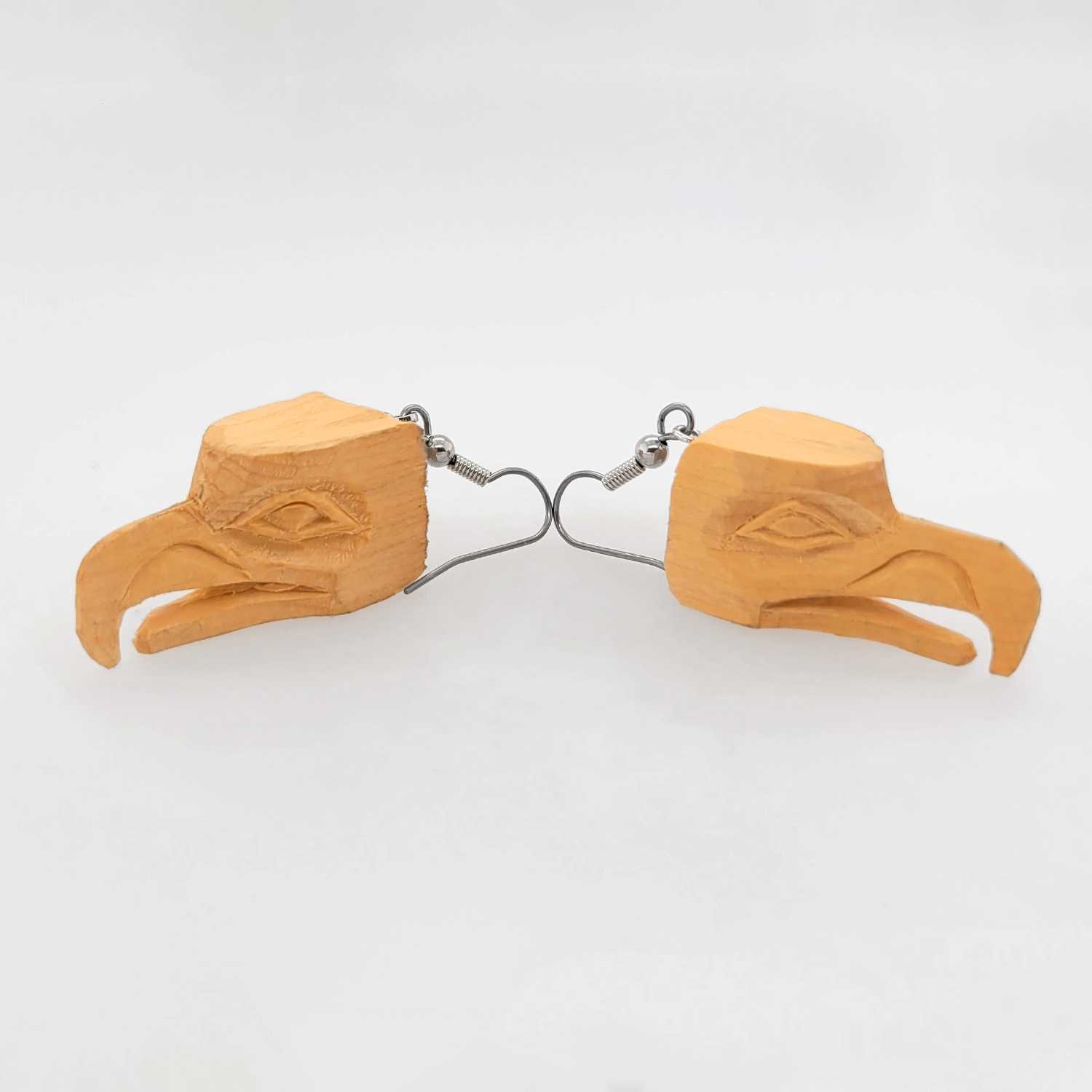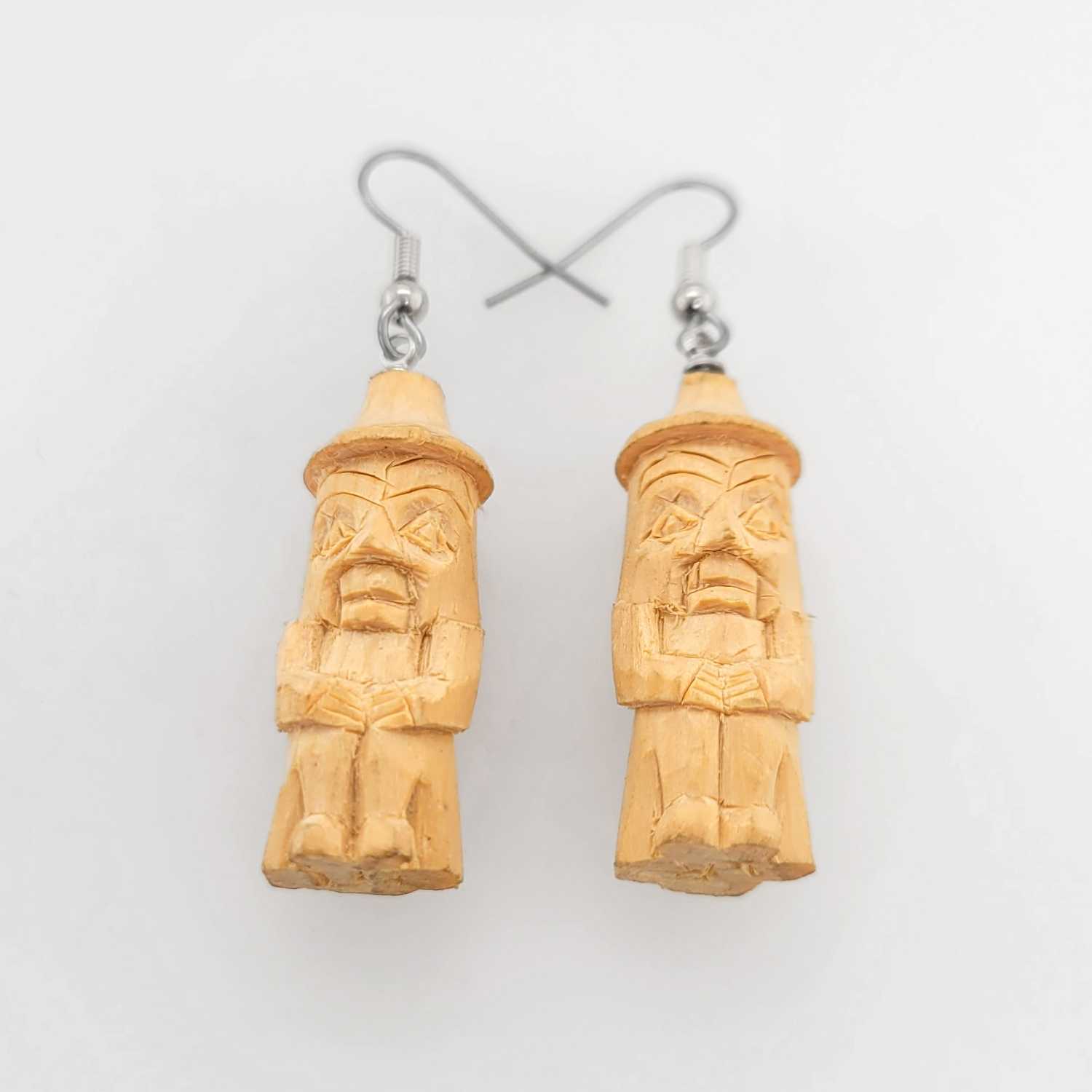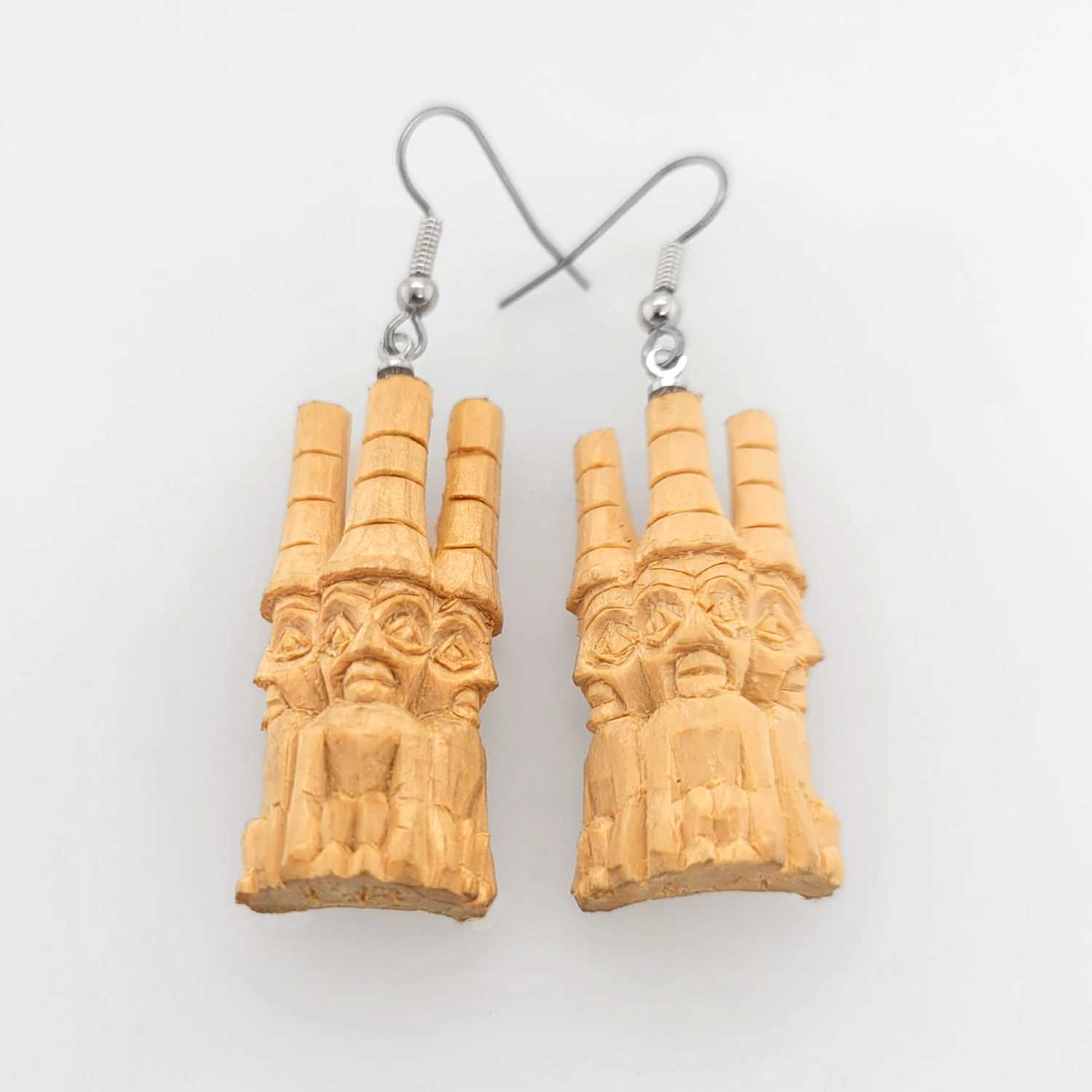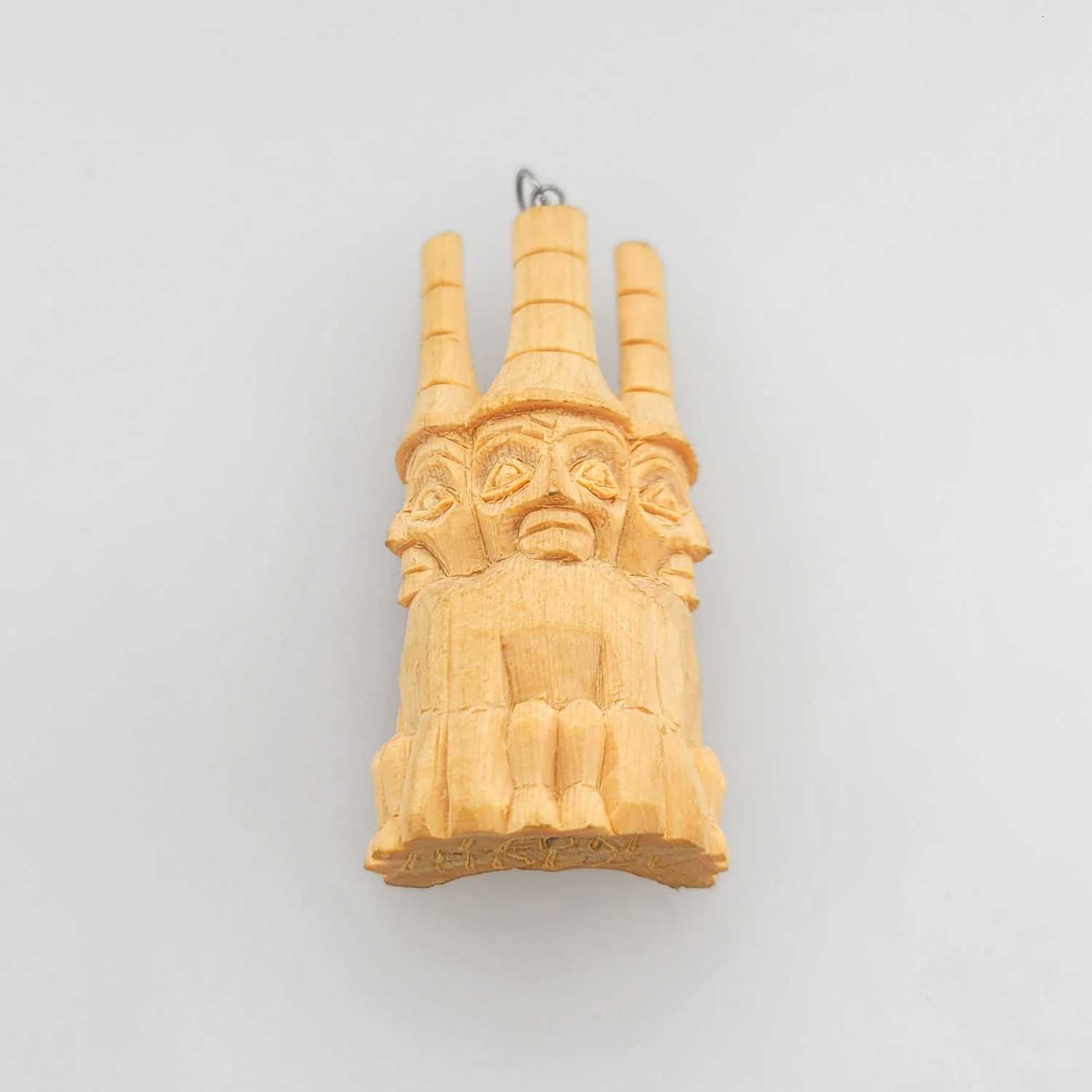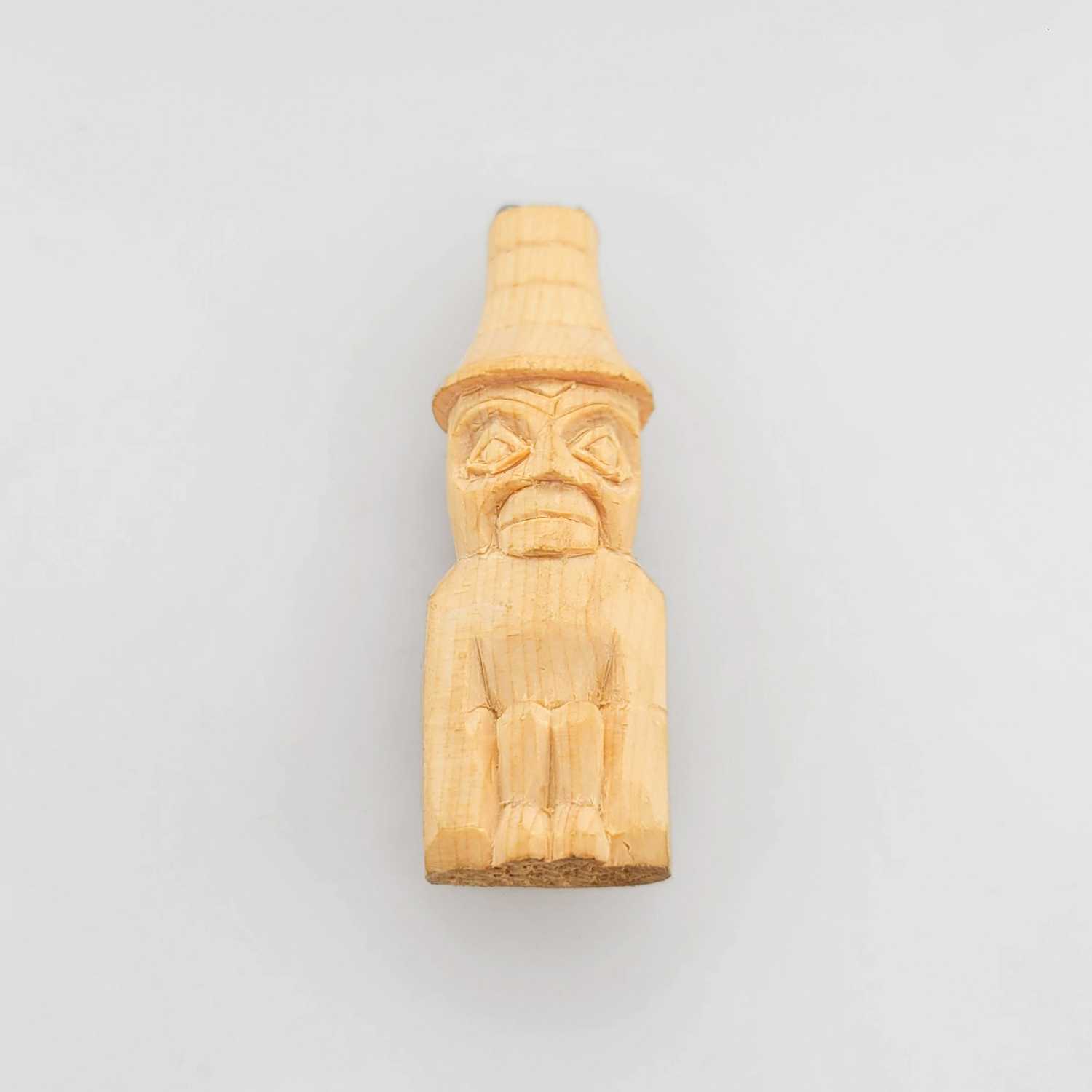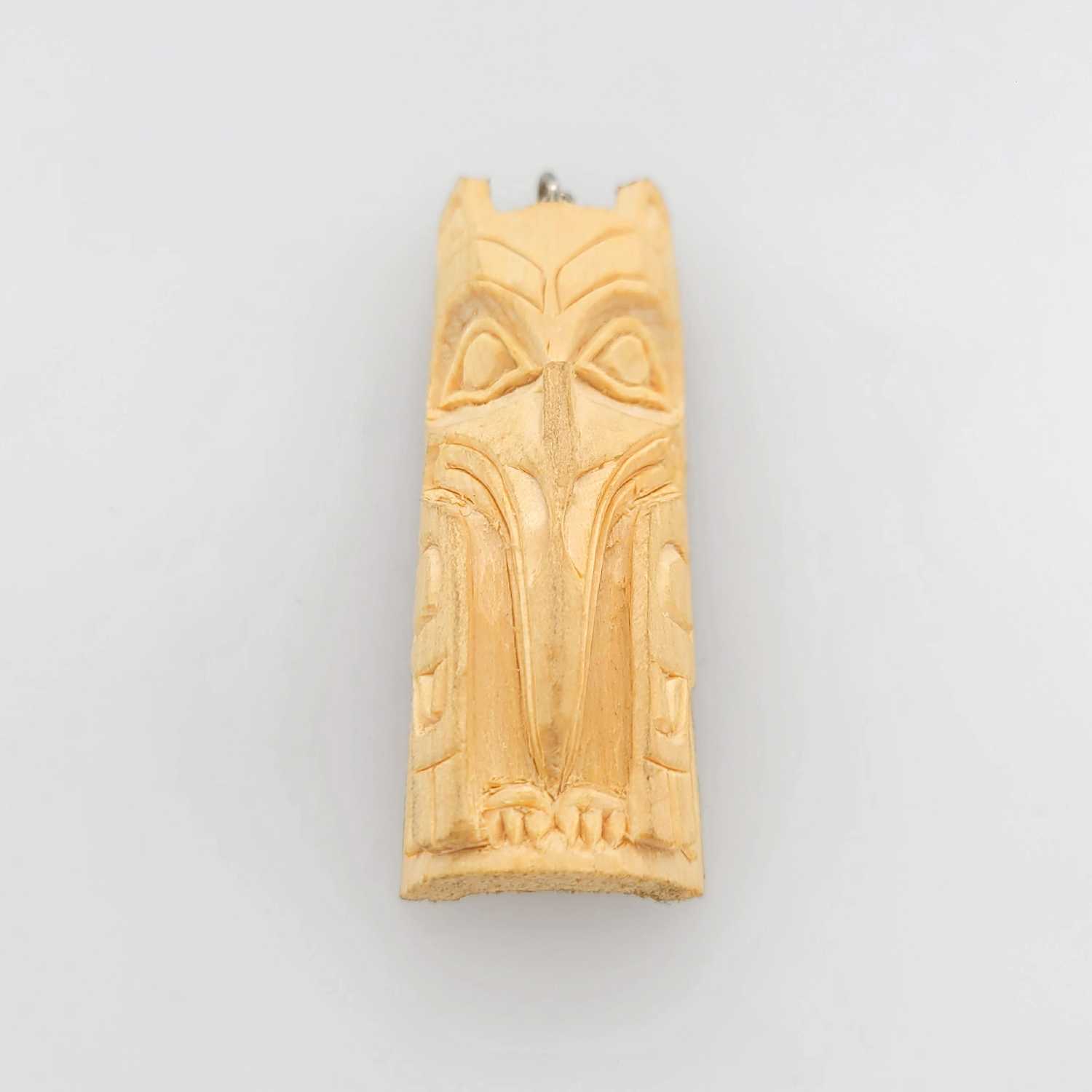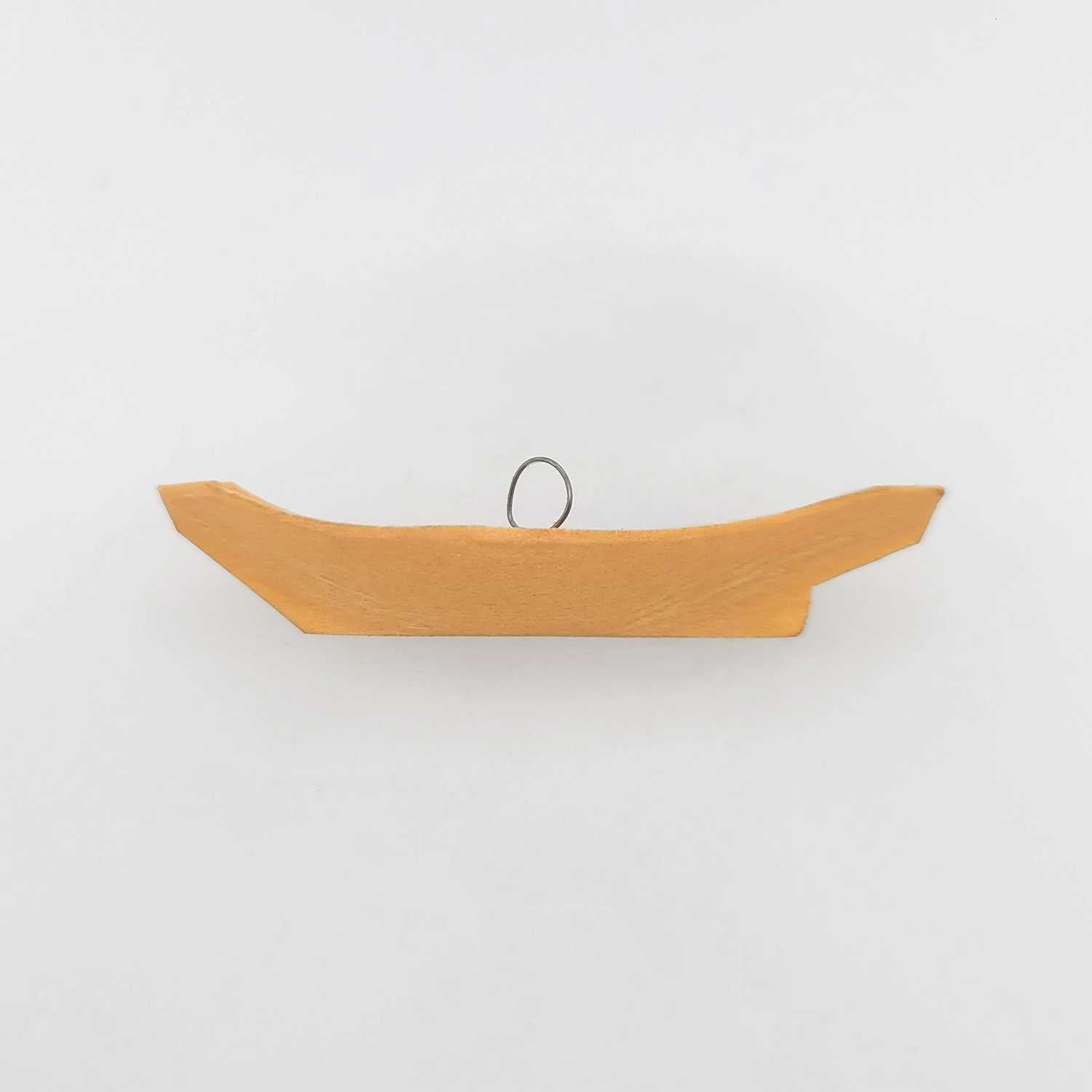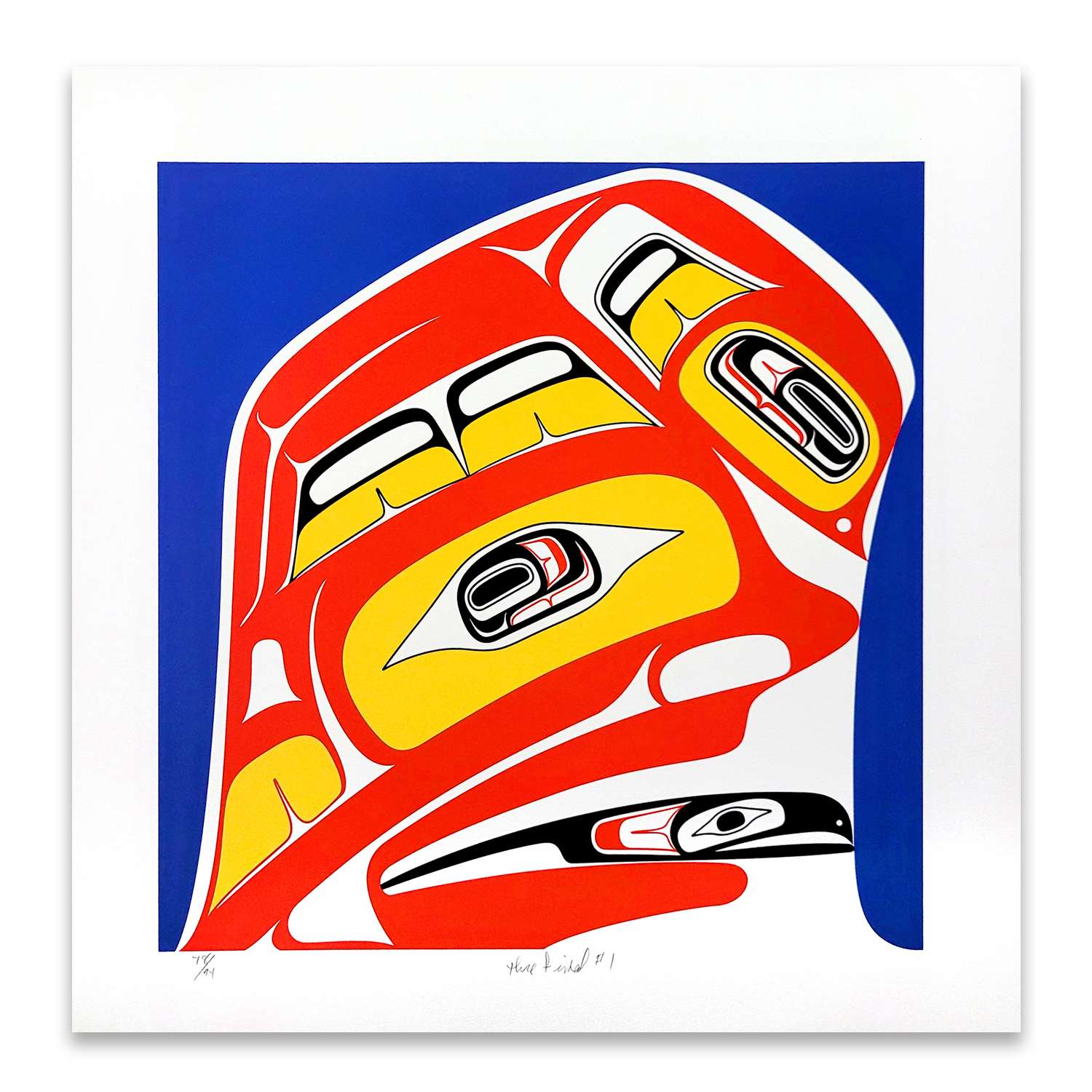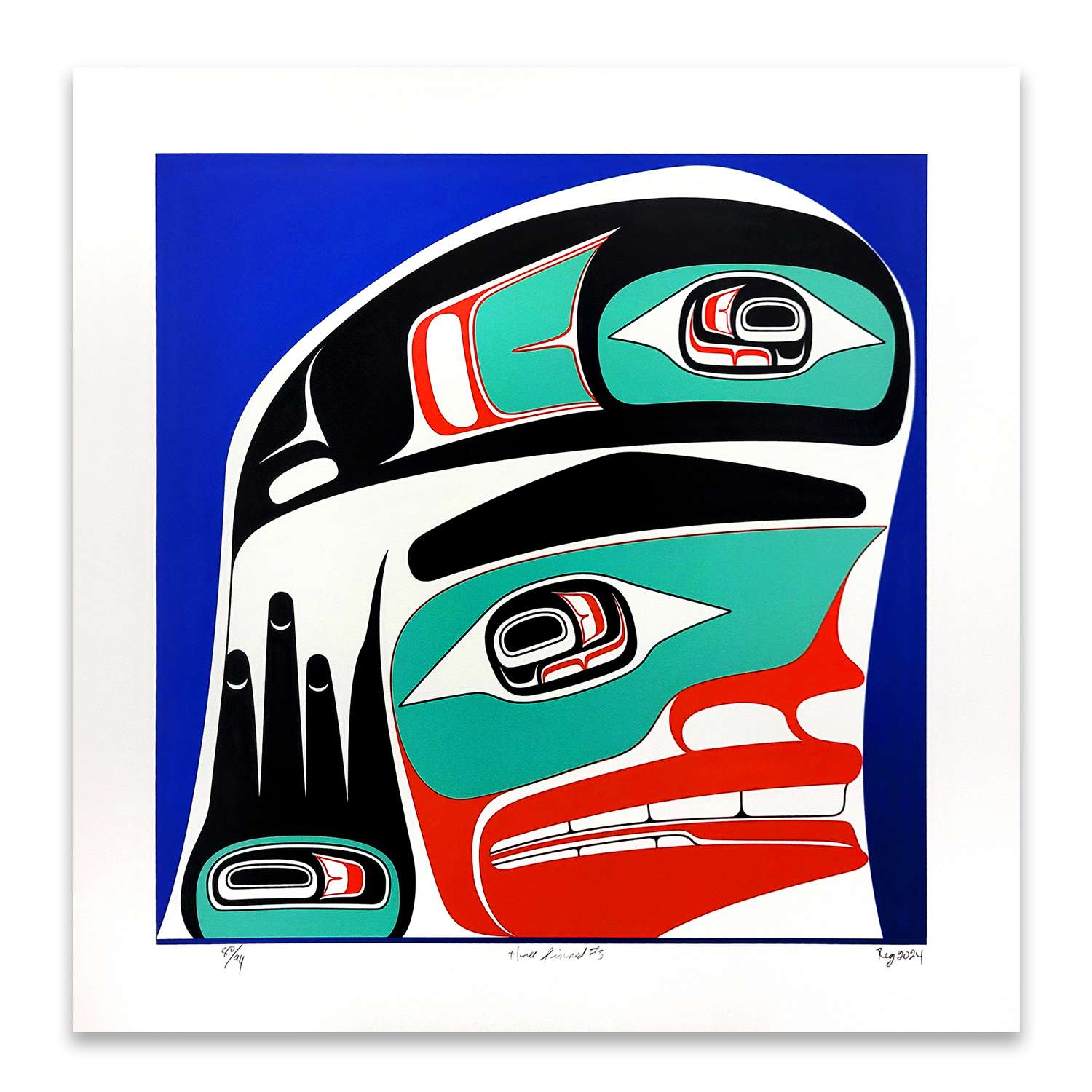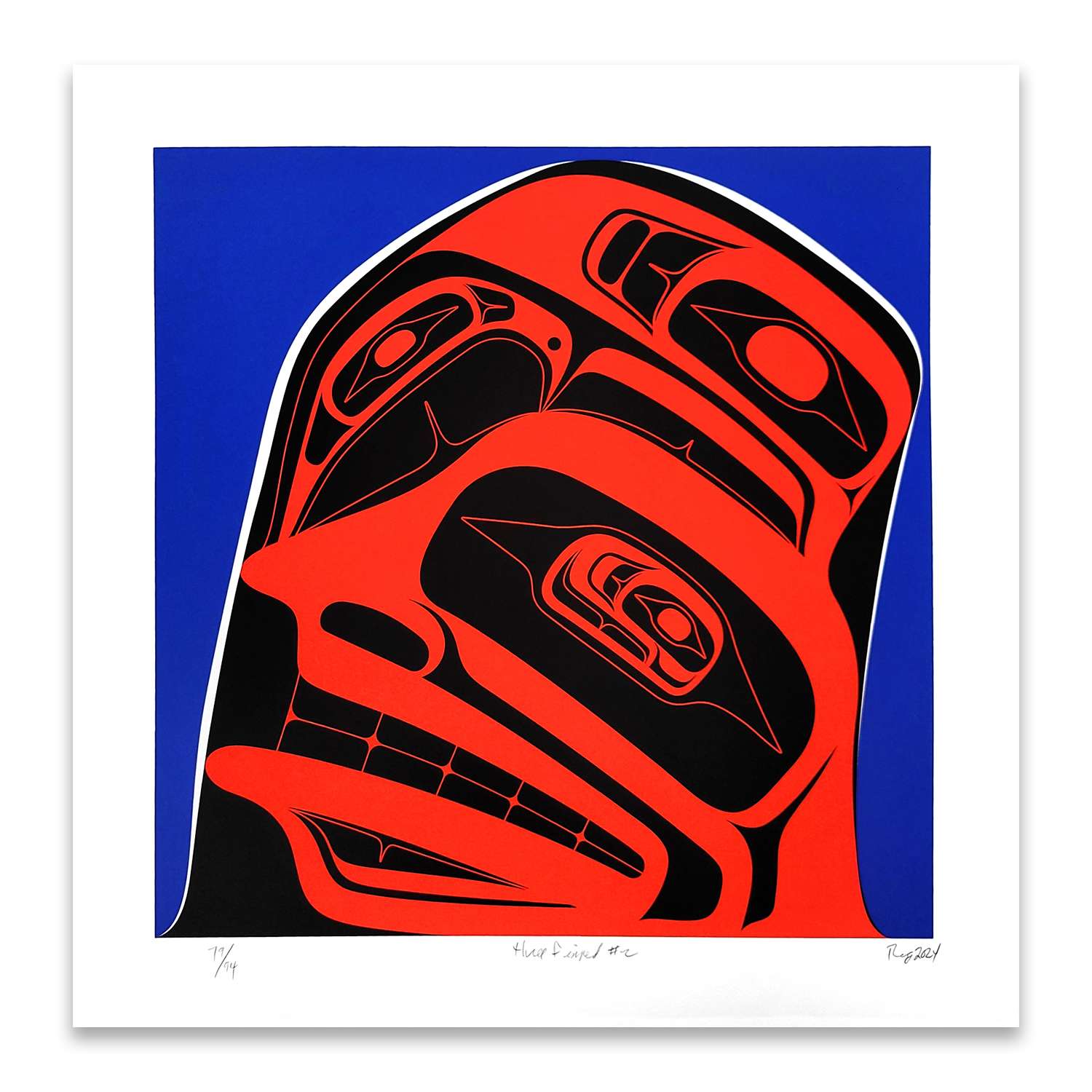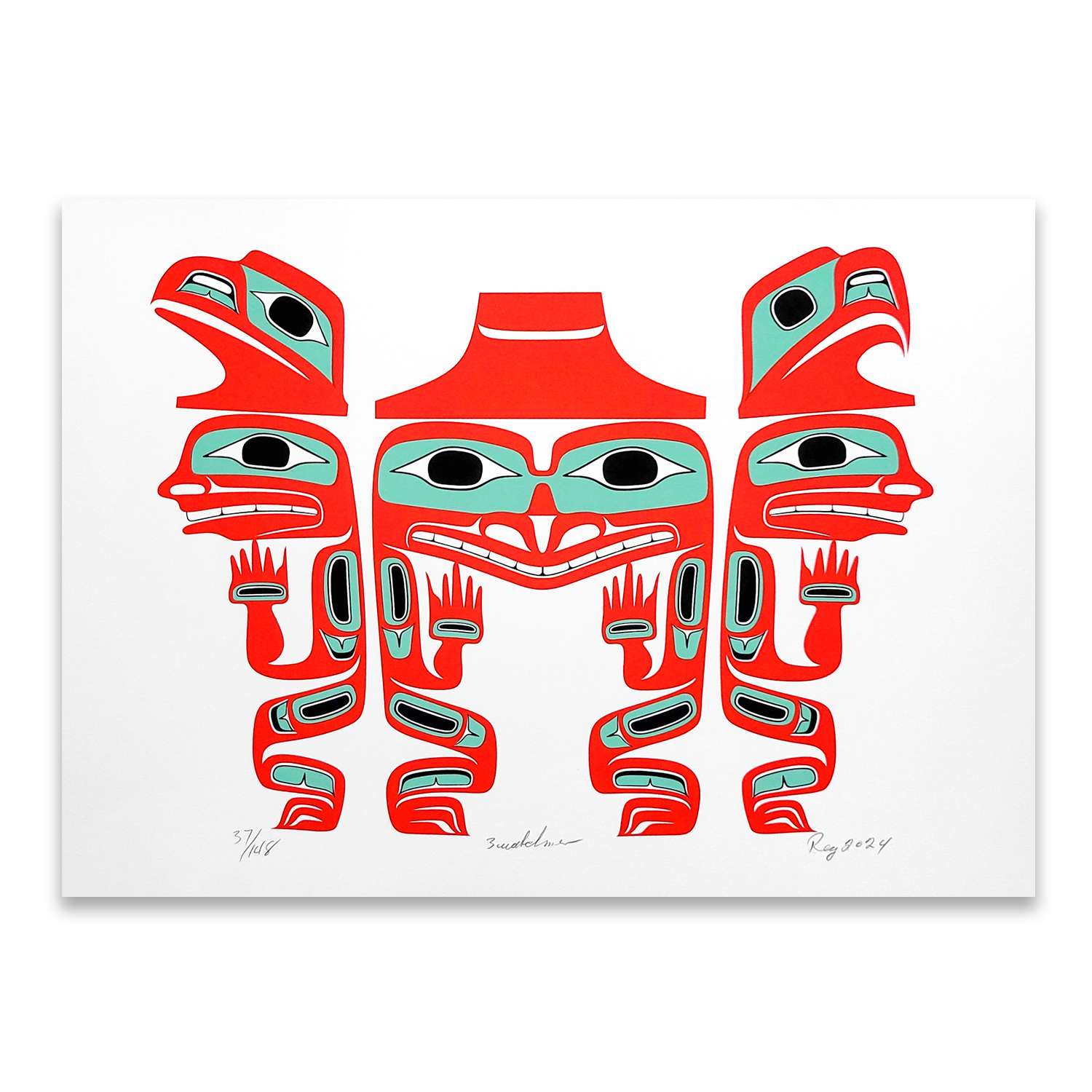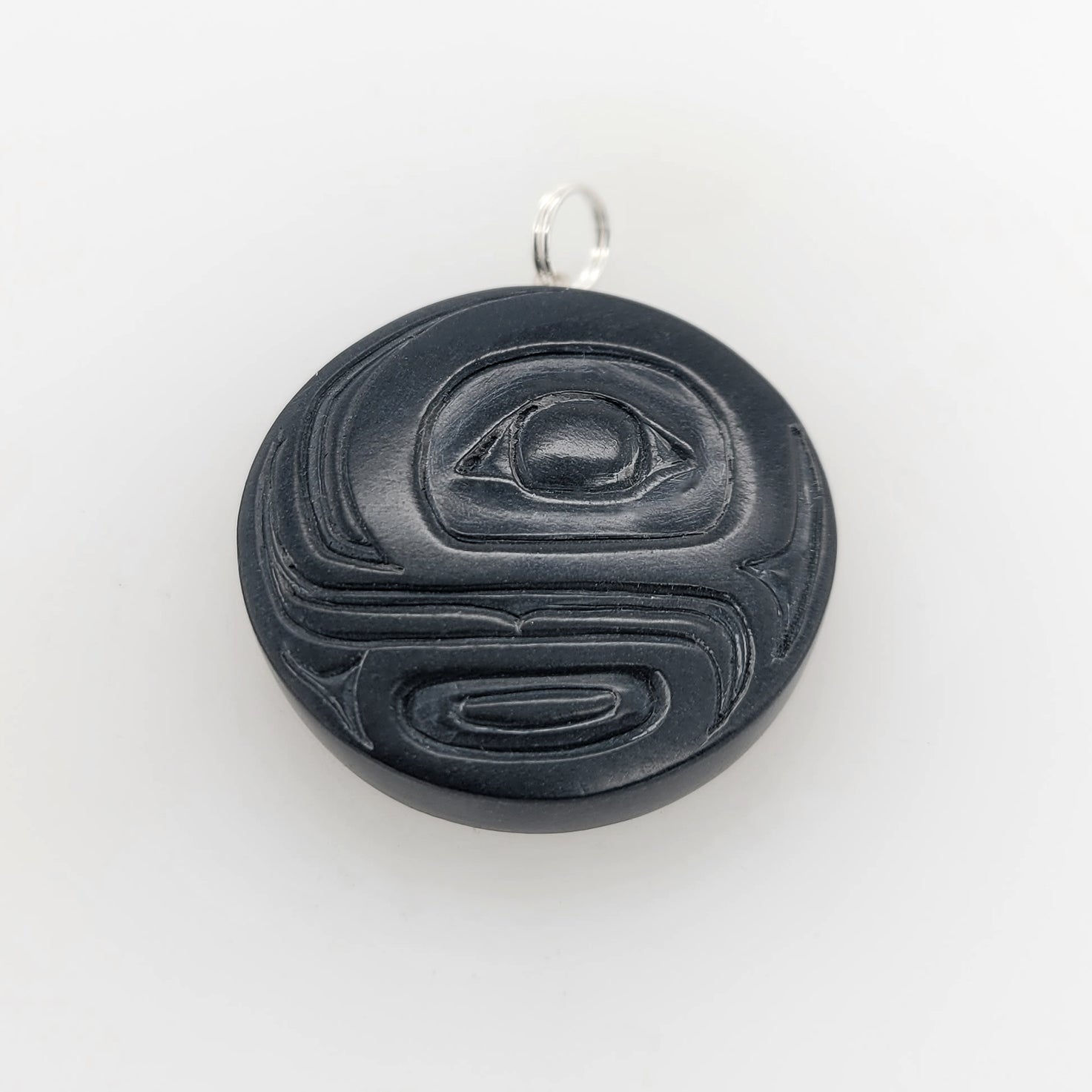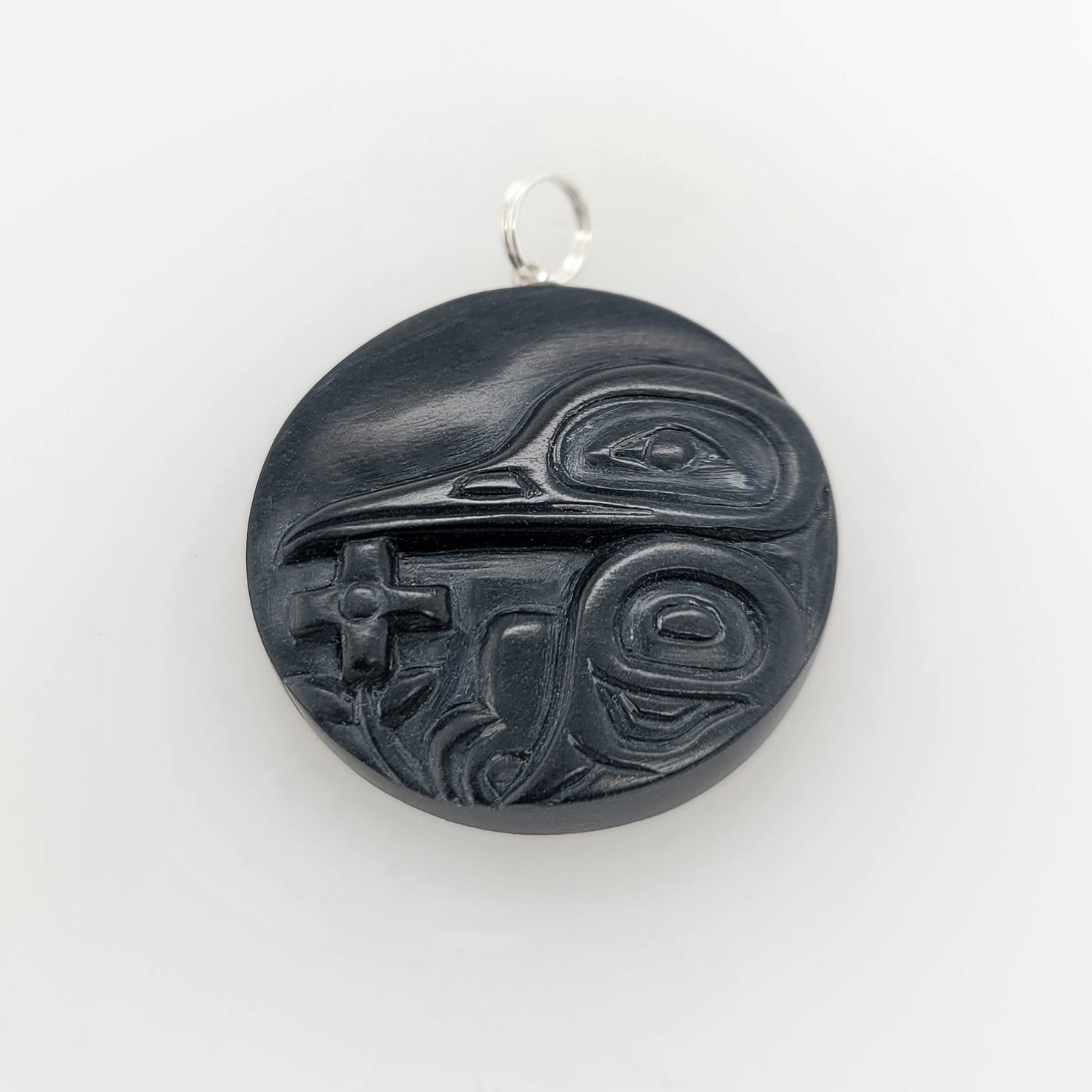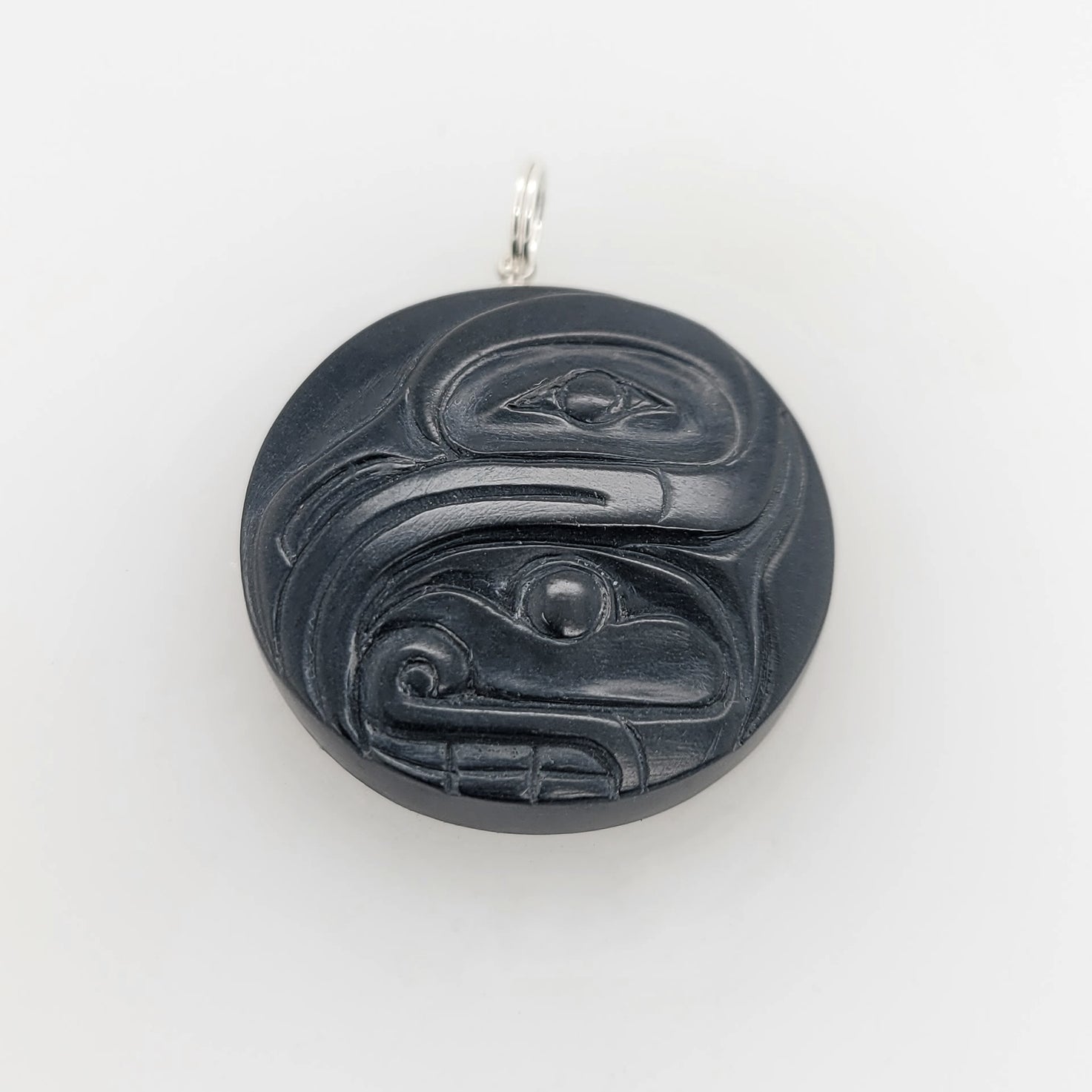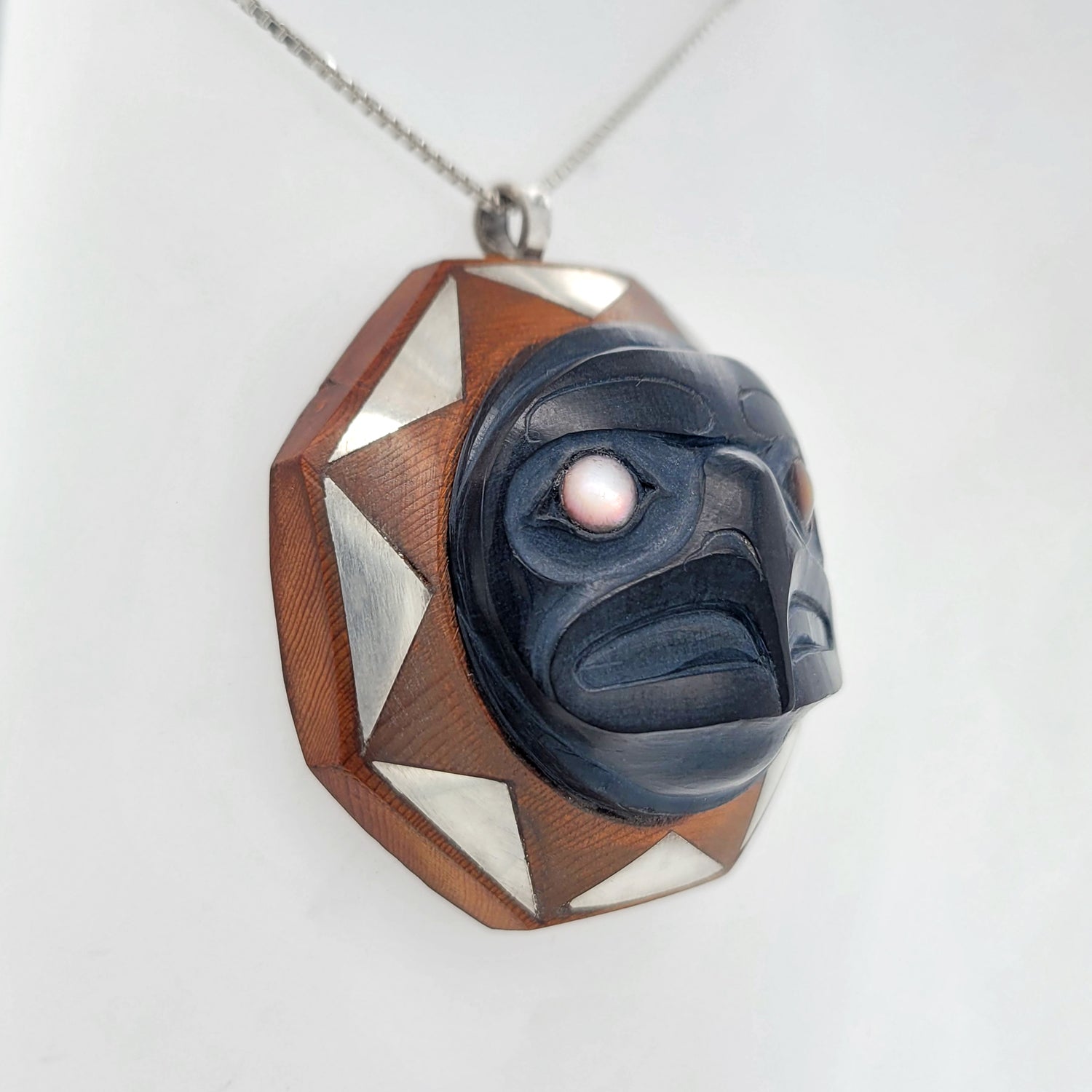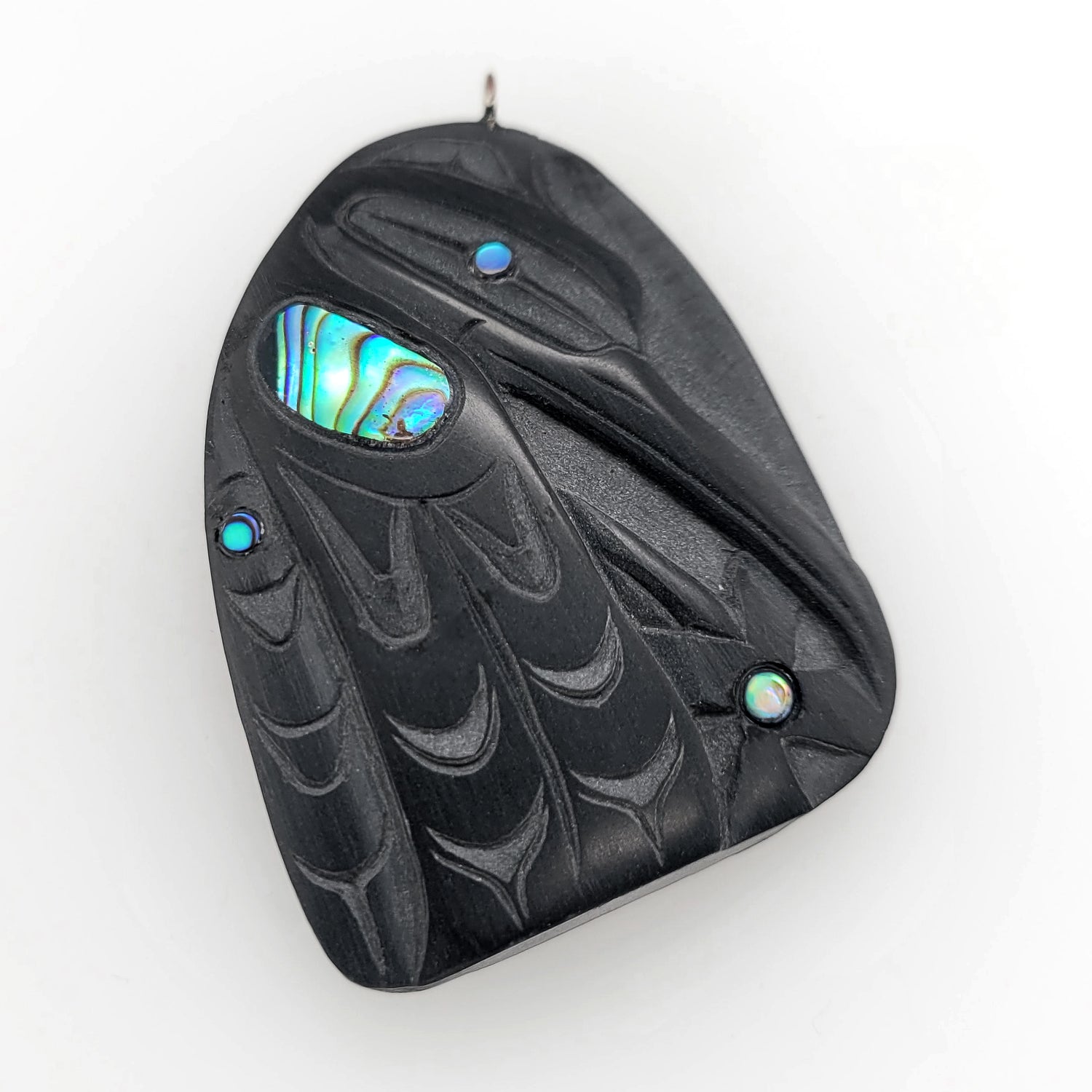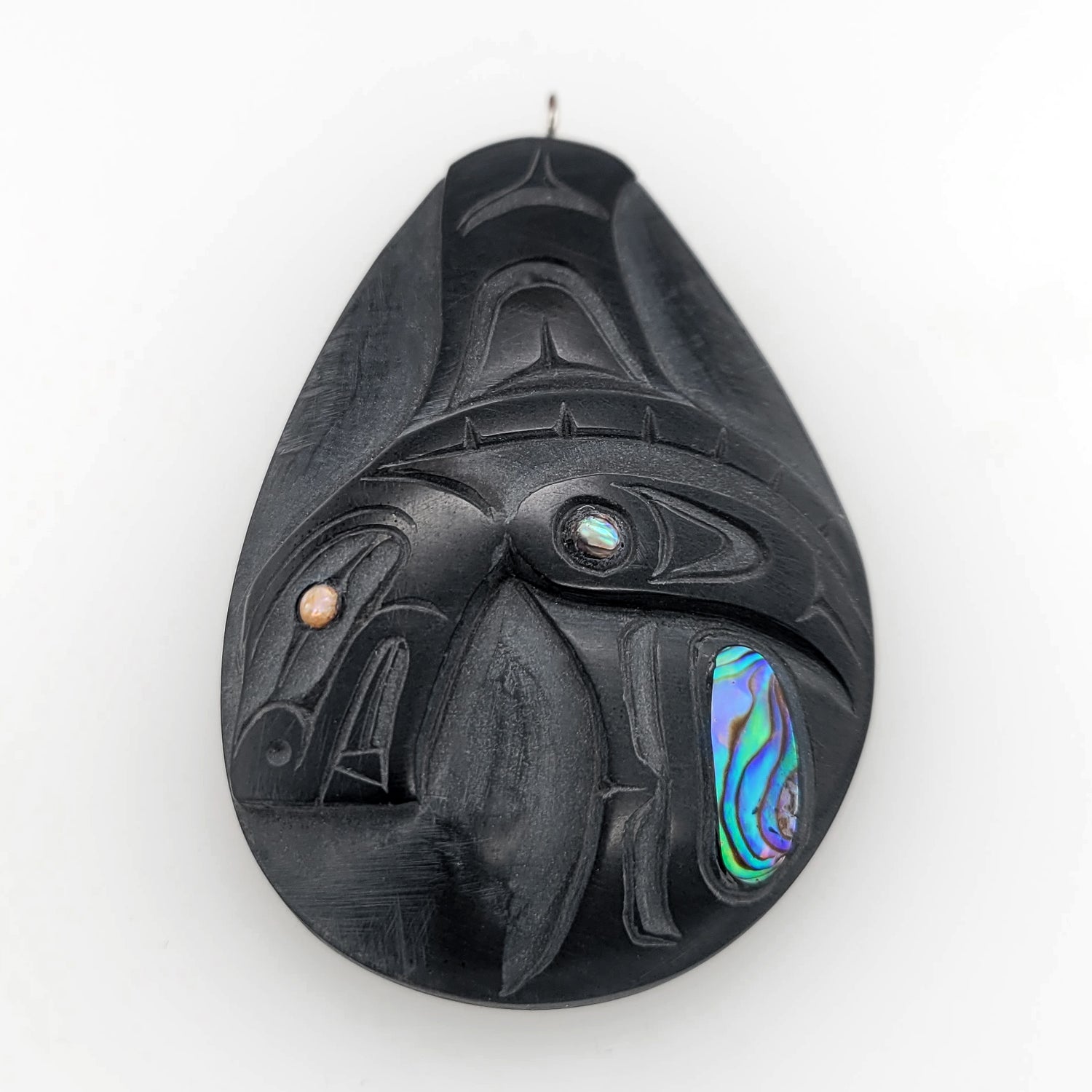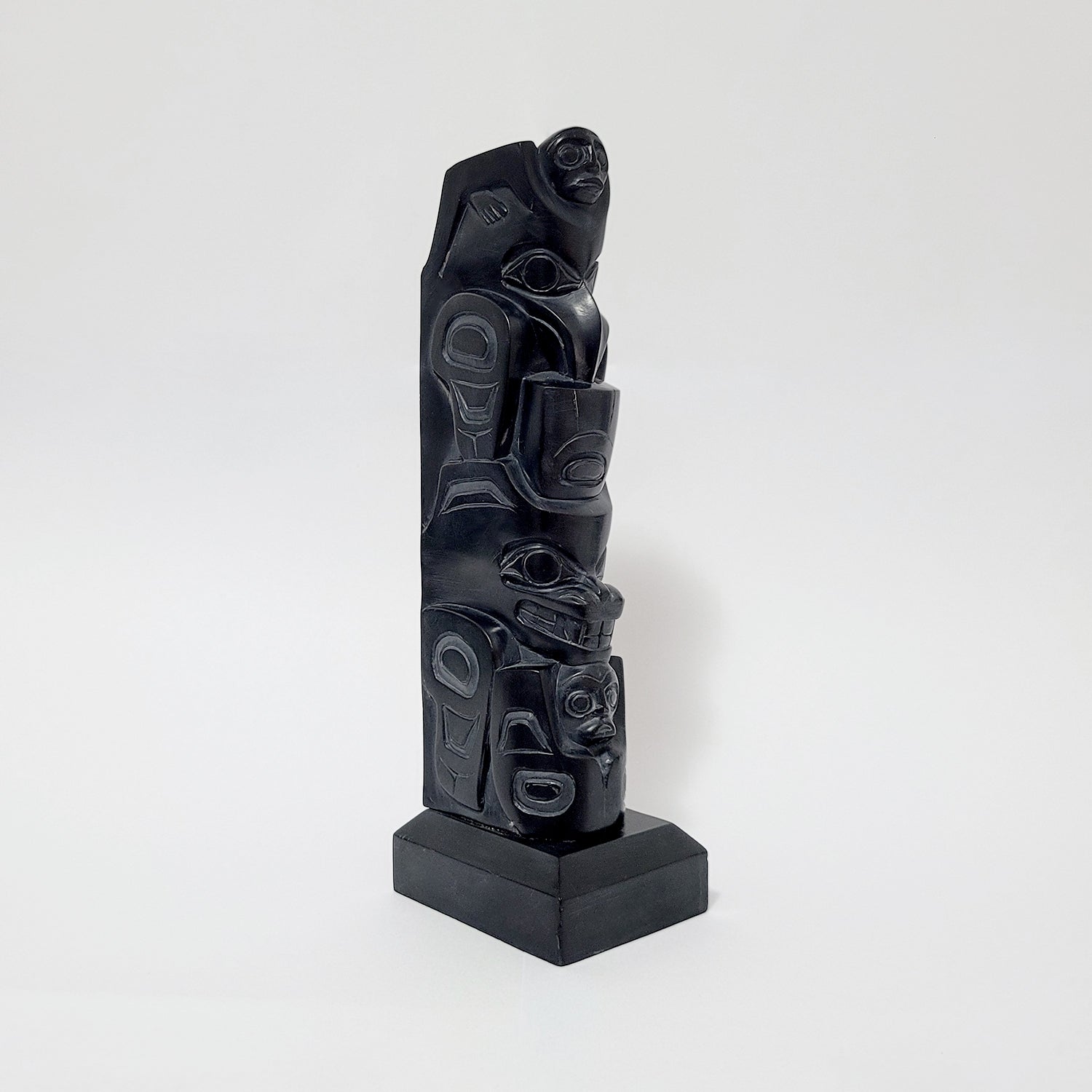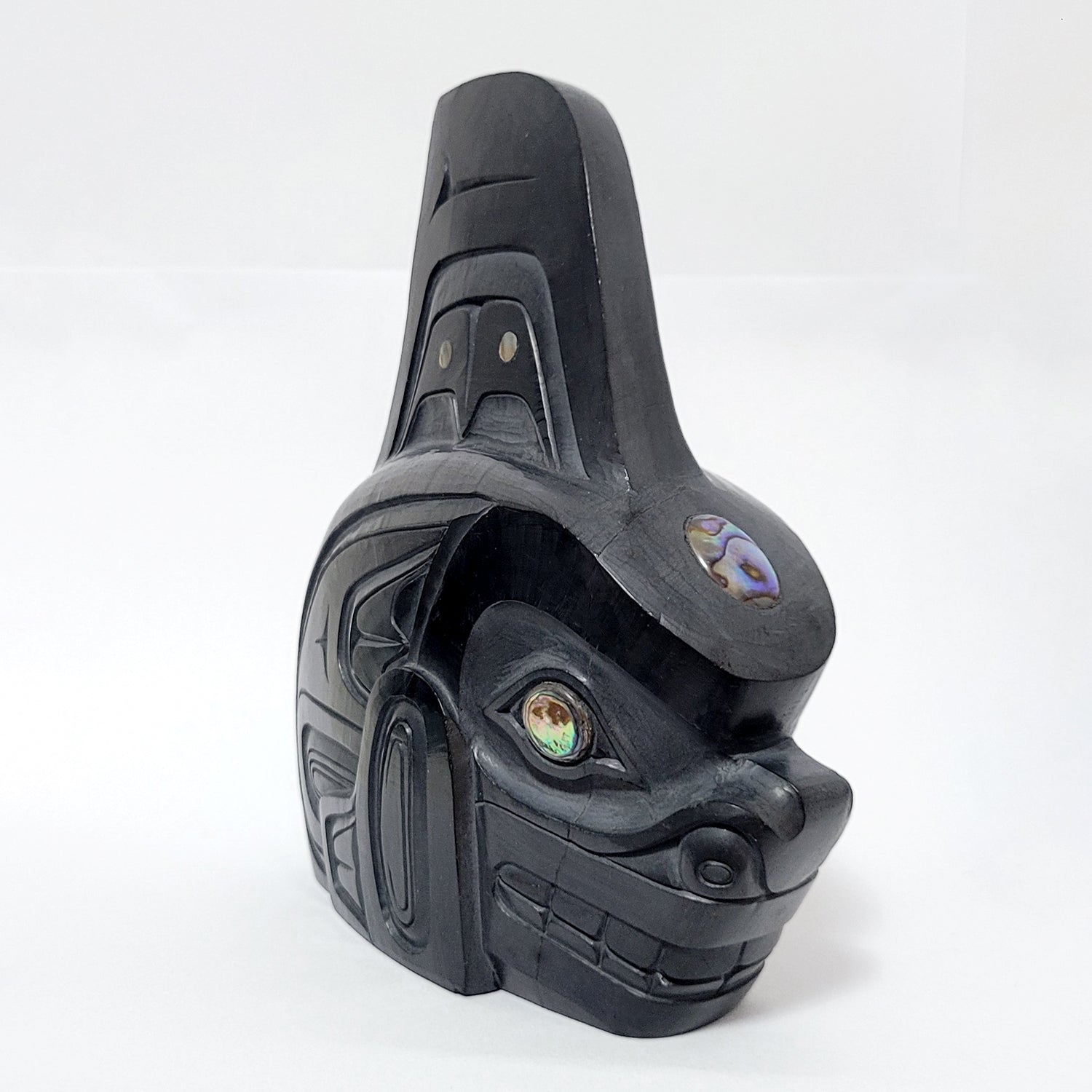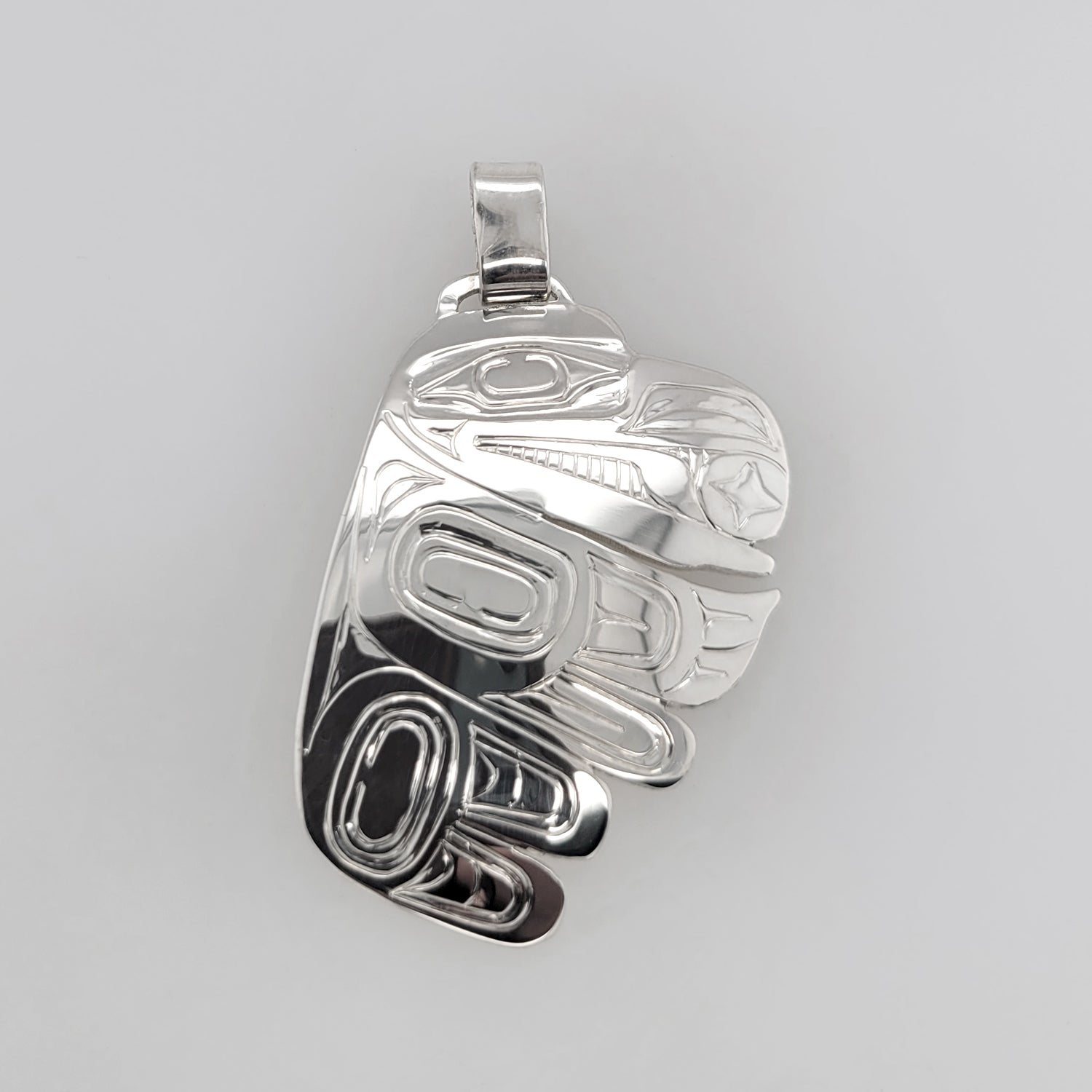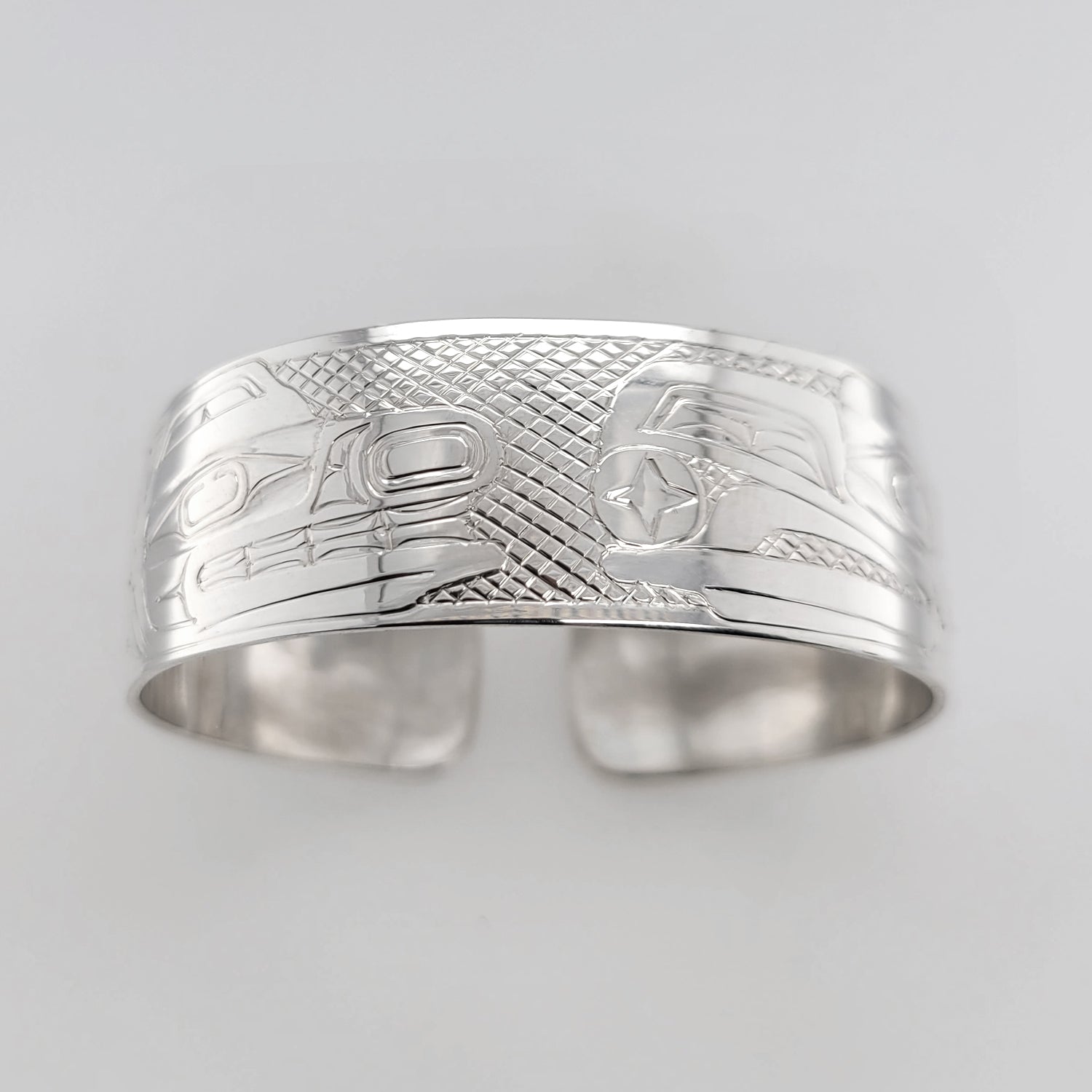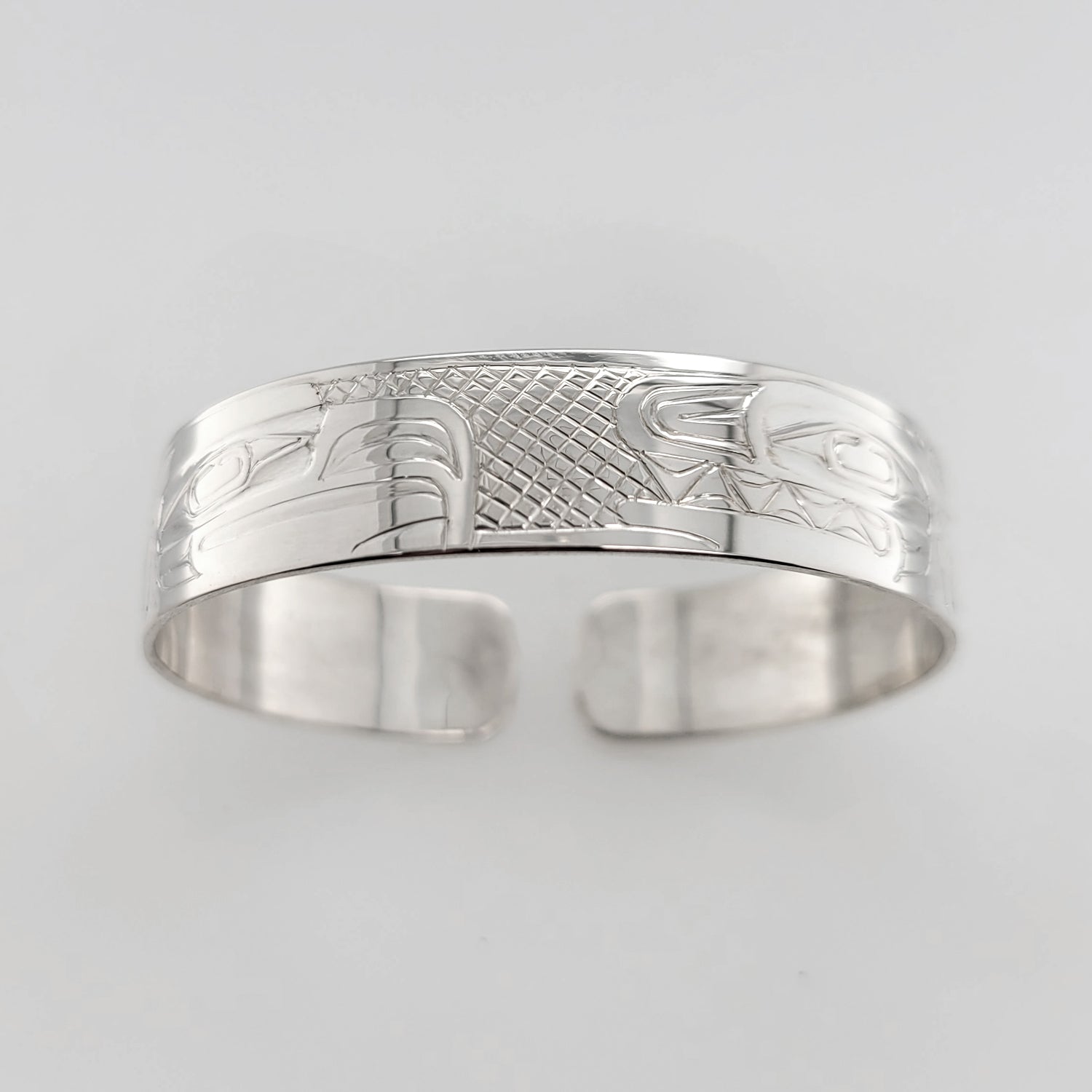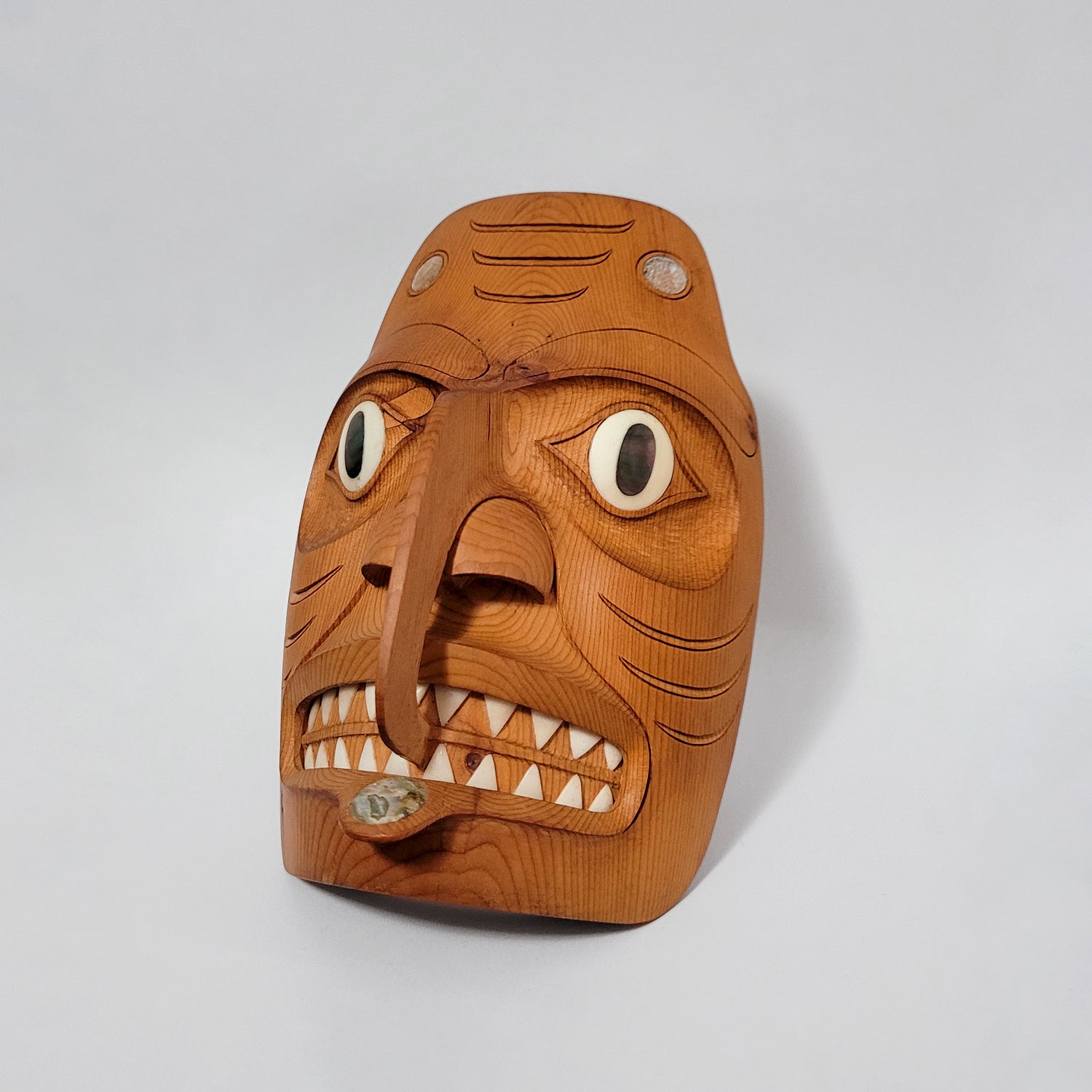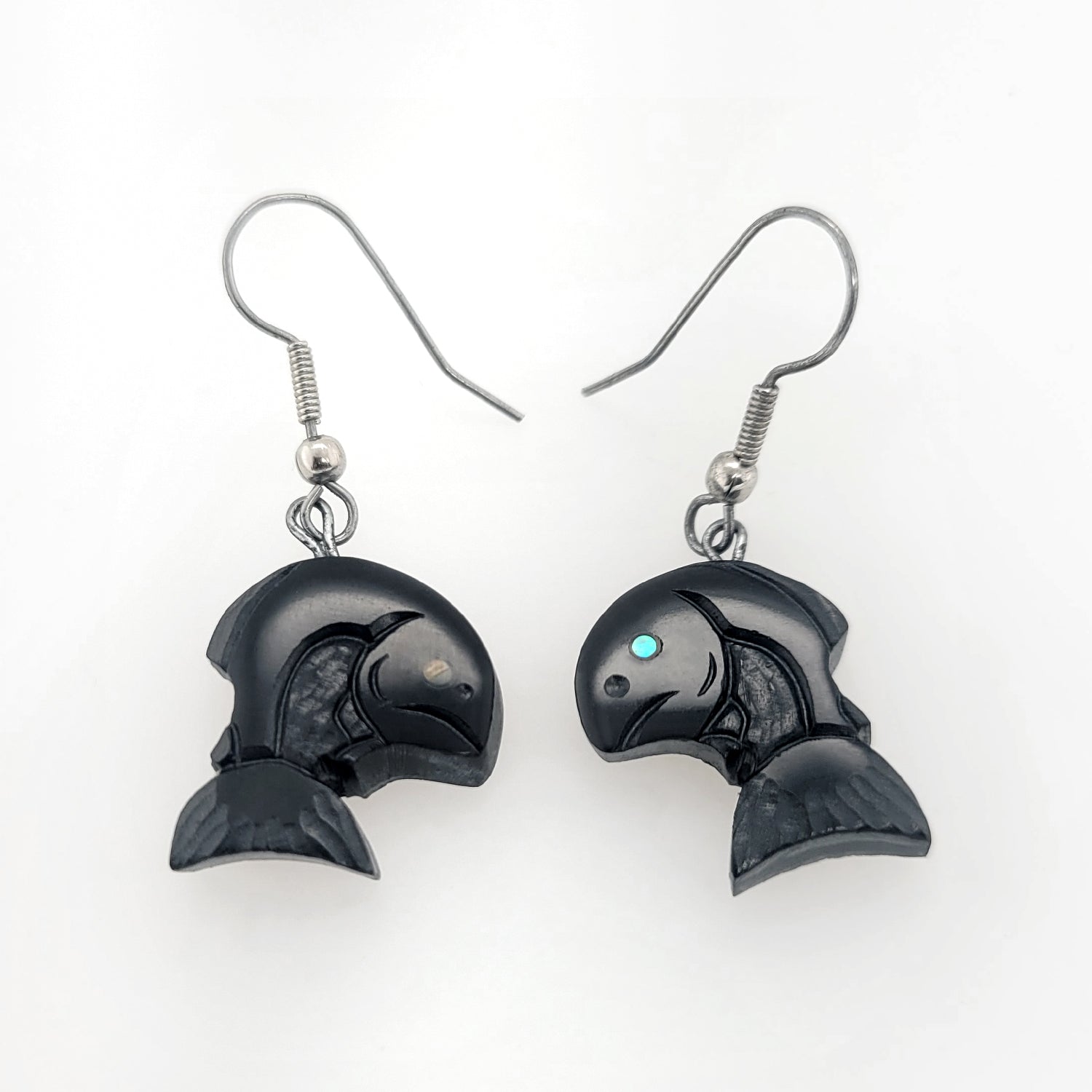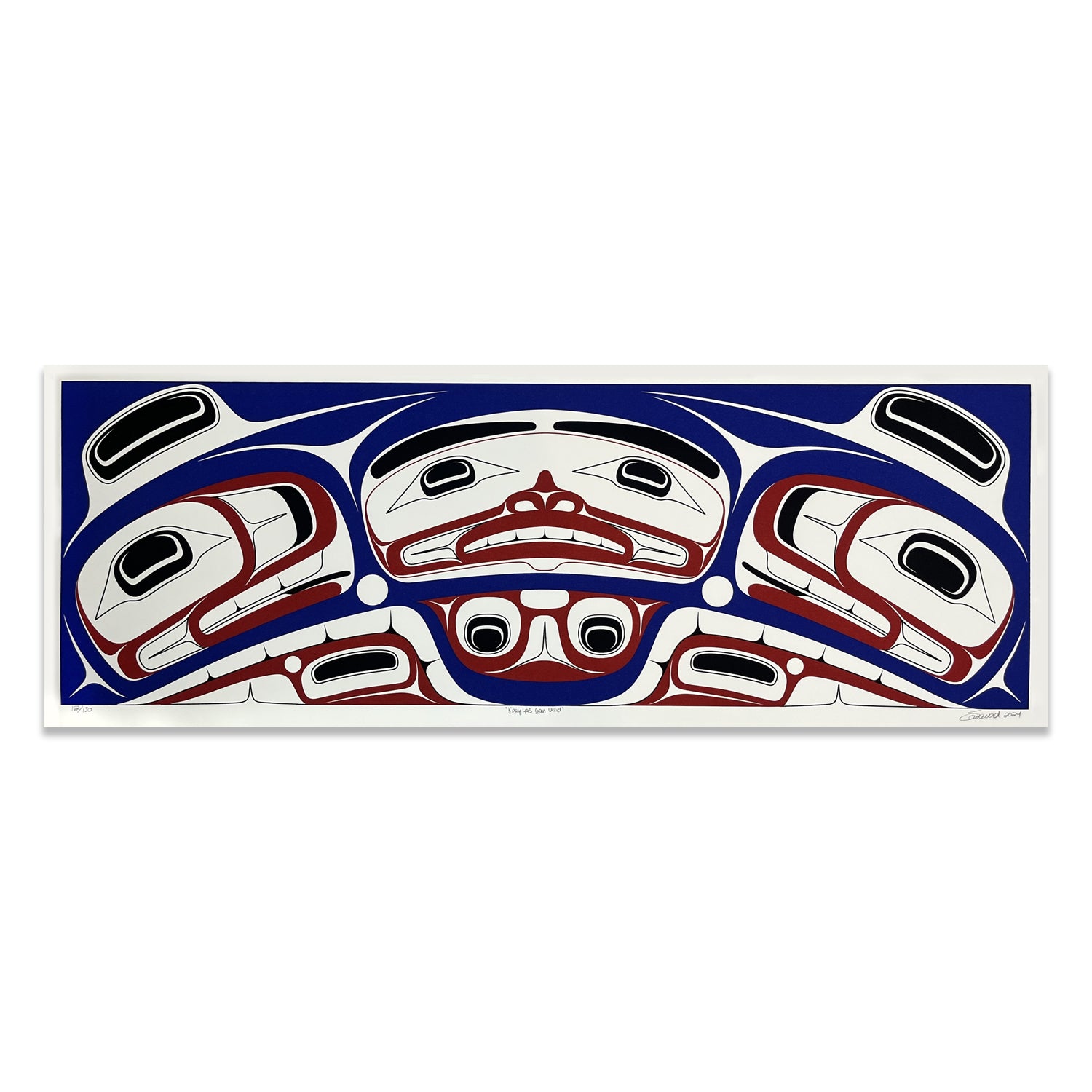Haida Art

Haida Art plays an important role in the development of the Pacific Northwest Coast native art styles. There is one distinct difference in Haida art compared to other West Coast native art cultures, a black slate material called Argillite. This black Argillite is only found on Haida Gwaii ( The Queen Charlotte Islands ) and is carved by many Haida artists. These Haida Argillite carvings often depict a West Coast Native story, mythical spirits, animals, Haida family crests, replicas of totem poles, bentwood boxes, canoes and other carvings, as well as contemporary interpretations. The authentic Haida argillite carvings and sculptures offered in our gallery, are all created by native artists from the Haida Nation. Most of the Haida Artists featured, are living and working on Haida Gwaii ( the Haida name for the Queen Charlotte Islands ) today.

Haida Art and Jewelry Master Carvers
Many of the great Haida Master Artists of the past are unknown, since most early artists did not sign their pieces of Haida Art. The signature of the Haida Artist was the masterpiece itself and many recognized the artist through the distinct style and carving techniques used.
Today, Haida Master Artists and contemporary carvers like Charles Edenshaw, Bill Reid, Robert Davidson, Christian White, Ron Russ and Marcel Russ, Cooper Wilson, Bill Bellis, Donnie Edenshaw, Garner Moody and many others are internationally known and recognized for their distinct styles and wide variety of work.
Haida Art and Formline Design
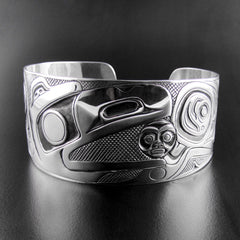
Haida Art, like most Pacific Westcoast native art styles, is also based on a very structured form line design as described below.
"Some of the best examples of traditional north coast form line flat style art are from the hands of Haida artists. Haida art is an art of line. Four common characteristics of two-dimensional Haida art are: balance, unity, symmetry and tension within the design. Flat designs are also compact, highly organized and have a classic highly unified structural appearance. Haida flat design has, within its structural form, graceful flowing lines and striking colours and a capability of communicating and making visible any aspects of their social system, particularly the crest system which contained over one hundred creatures. Flat design was applied to almost everything."
"Painted designs were applied to hats, baskets, apparel, carved objects of wood, metal, horn, bone, leather and other objects. Some of the best examples of traditional north coast formline two-dimensional designs in Haida style were created within flowing and elegantly balanced designs on bent cedar boxes and chests. In painted Haida flat design, heads were often one-third to one half the size of the whole creature and usually portrayed frontally, while profiled portrayal was preferred on heads of animals, birds, whales, mythological and supernatural creatures."
"Bodies of animals and humans were often shown in a squatting position with legs and arms bent up. Human heads often had large hats with many vertically stacked potlatch rings. Heads had ovoid-shaped eye sockets with the eyeball and eyelid well defined and places in the medial upper area of the eye socket. There was little realism or naturalism in most drawn forms and almost no attention was given to details of the lower legs and feet. Complex Haida flat design often had a multitude of large staring eyes.; large creatures typically had open mouths exposing rows of teeth and large tongues. Images erupted from other images, for example, faces in the palms of hands, ears, blow holes, tails, flippers, fins, eyes and torsos. Traditional Haida designs made use of three standard colours-black, red and green."
"Within any design, blank spaces were seldom left unadorned and bilateral symmetry was a prime objective. Internal design elements within the formline regularly included elaborate U shaped units that were either single, joined or stacked to form a multitude of new shapes- many with internally split, double split, reverse split, hatched or crosshatched areas."
References
Quoted from Jim Gilbert and Karin Clark, LEARNING BY DESIGNING, Pacific Northwest Coast Native Indian Art, Volume 1, Raven Publishing Inc., 2003, p8-9. Available at: www.RavenPublishing.com
Contributions
If you would like to send us comments or feedback about the information on this Haida Art page, please send us an email to: info@spiritsofthewestcoast.com





